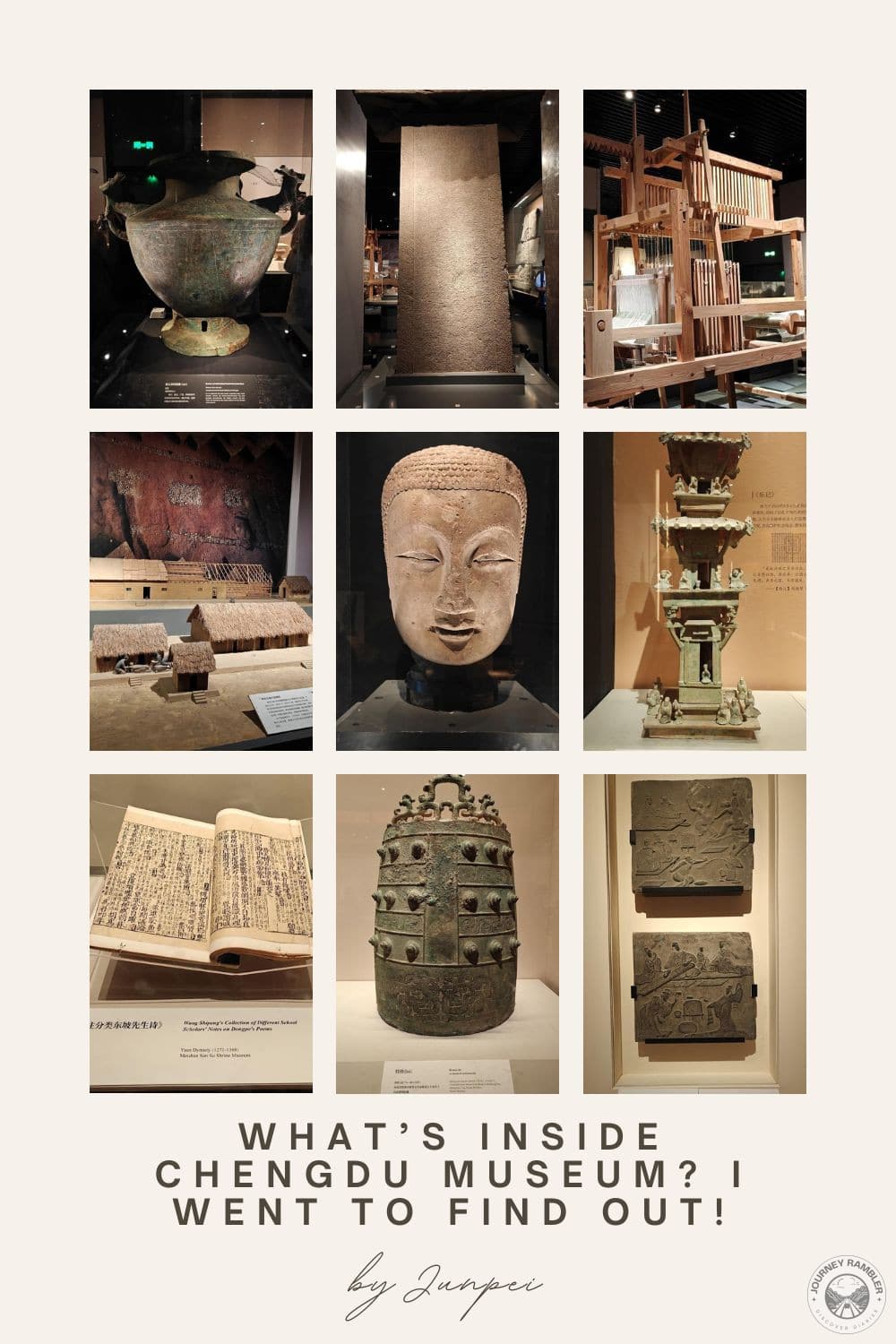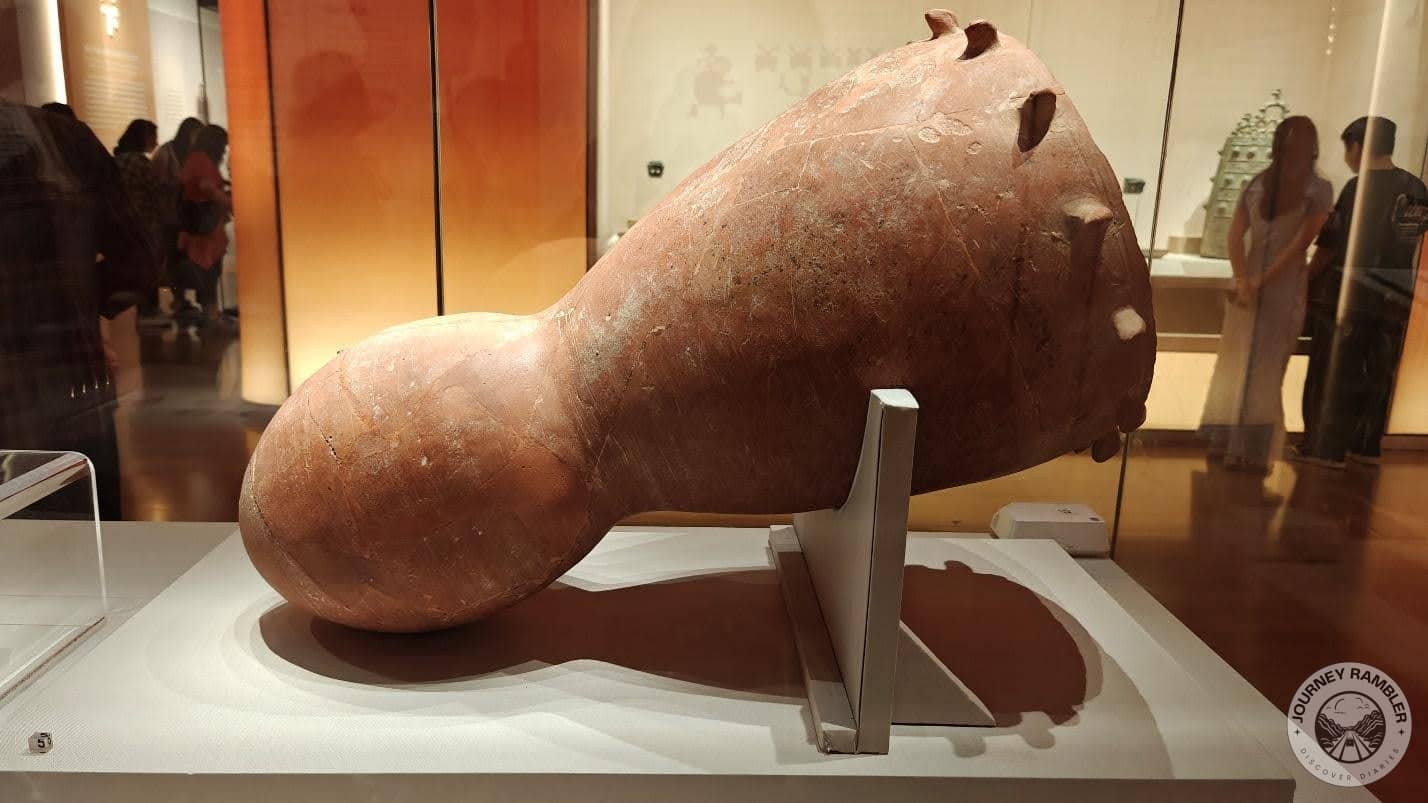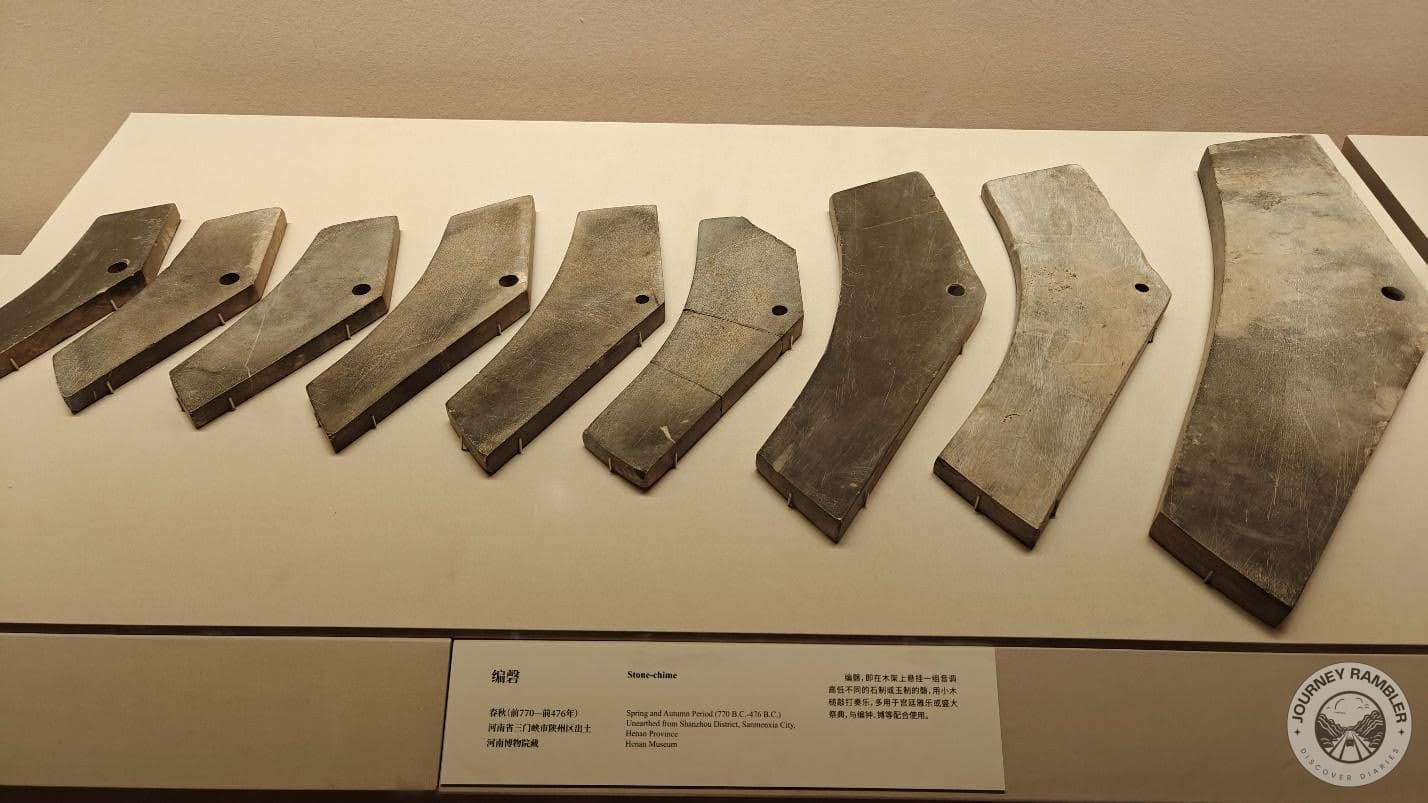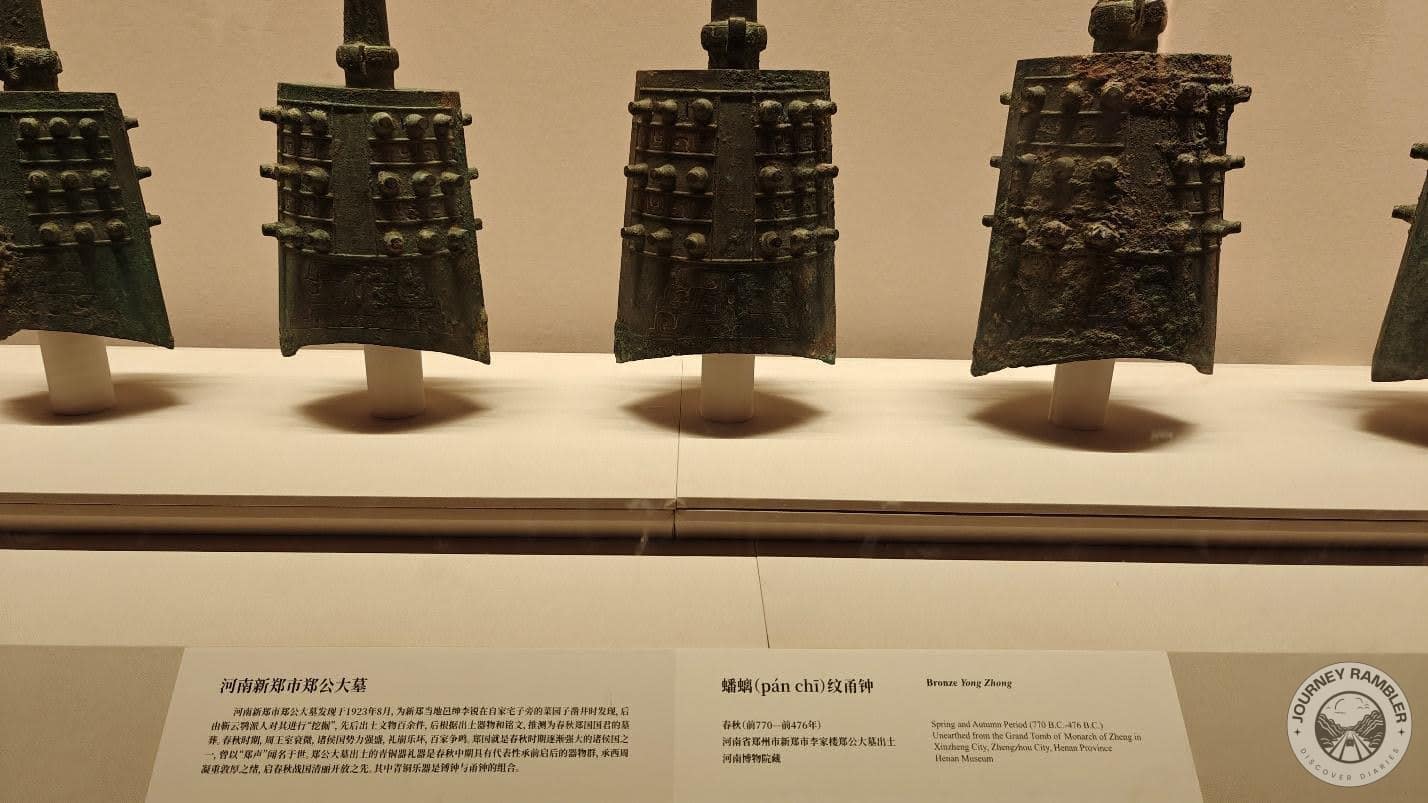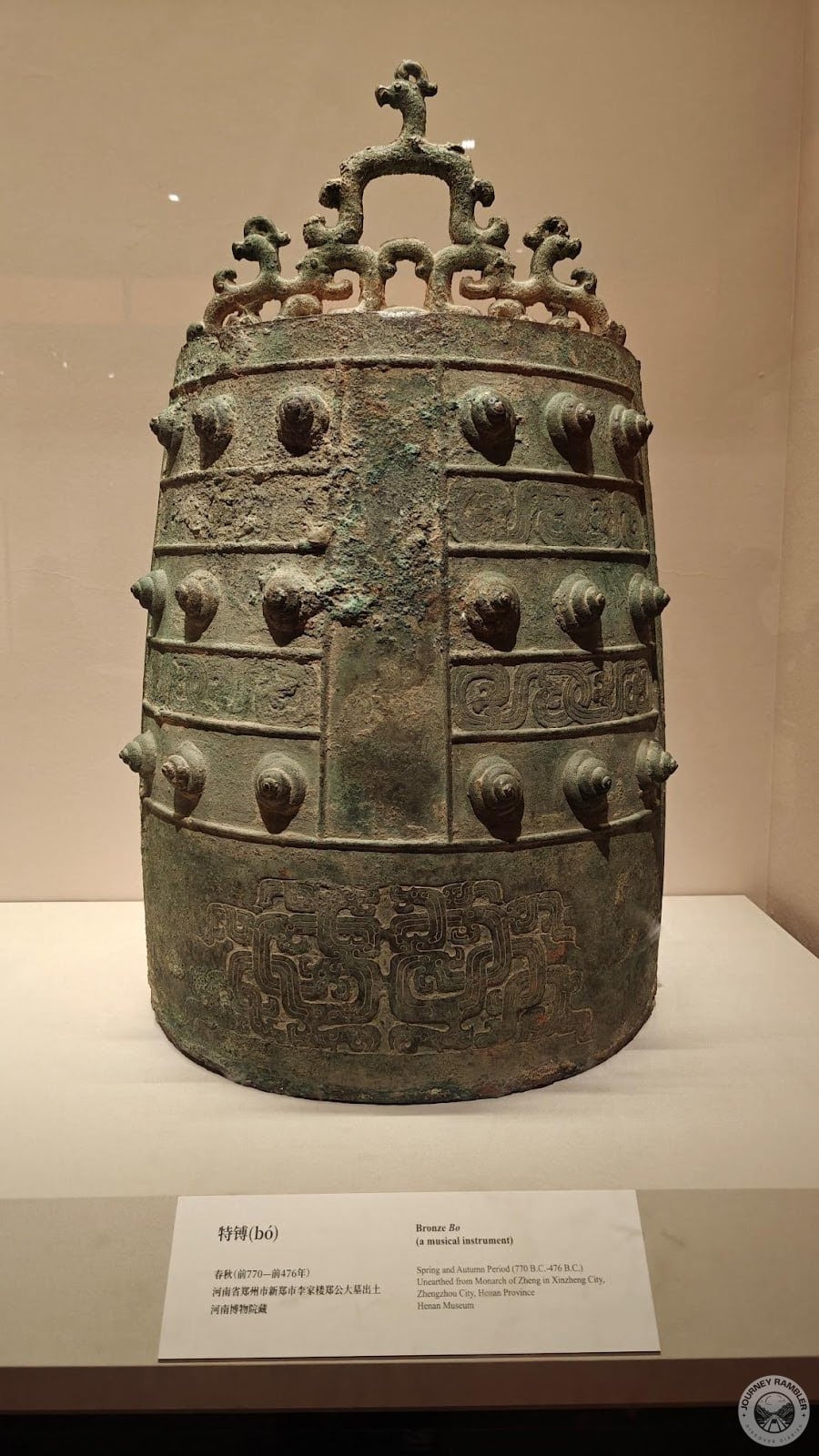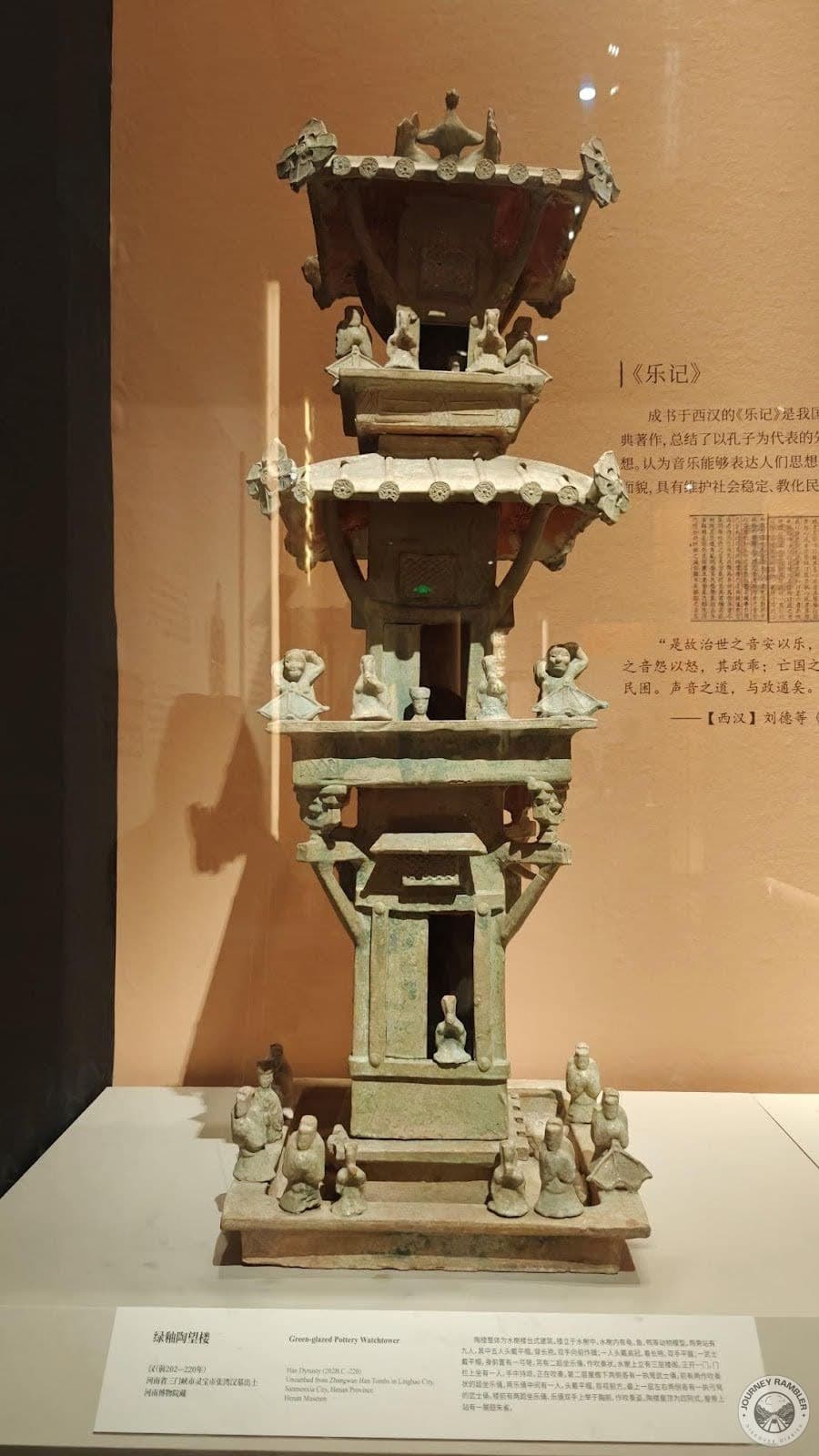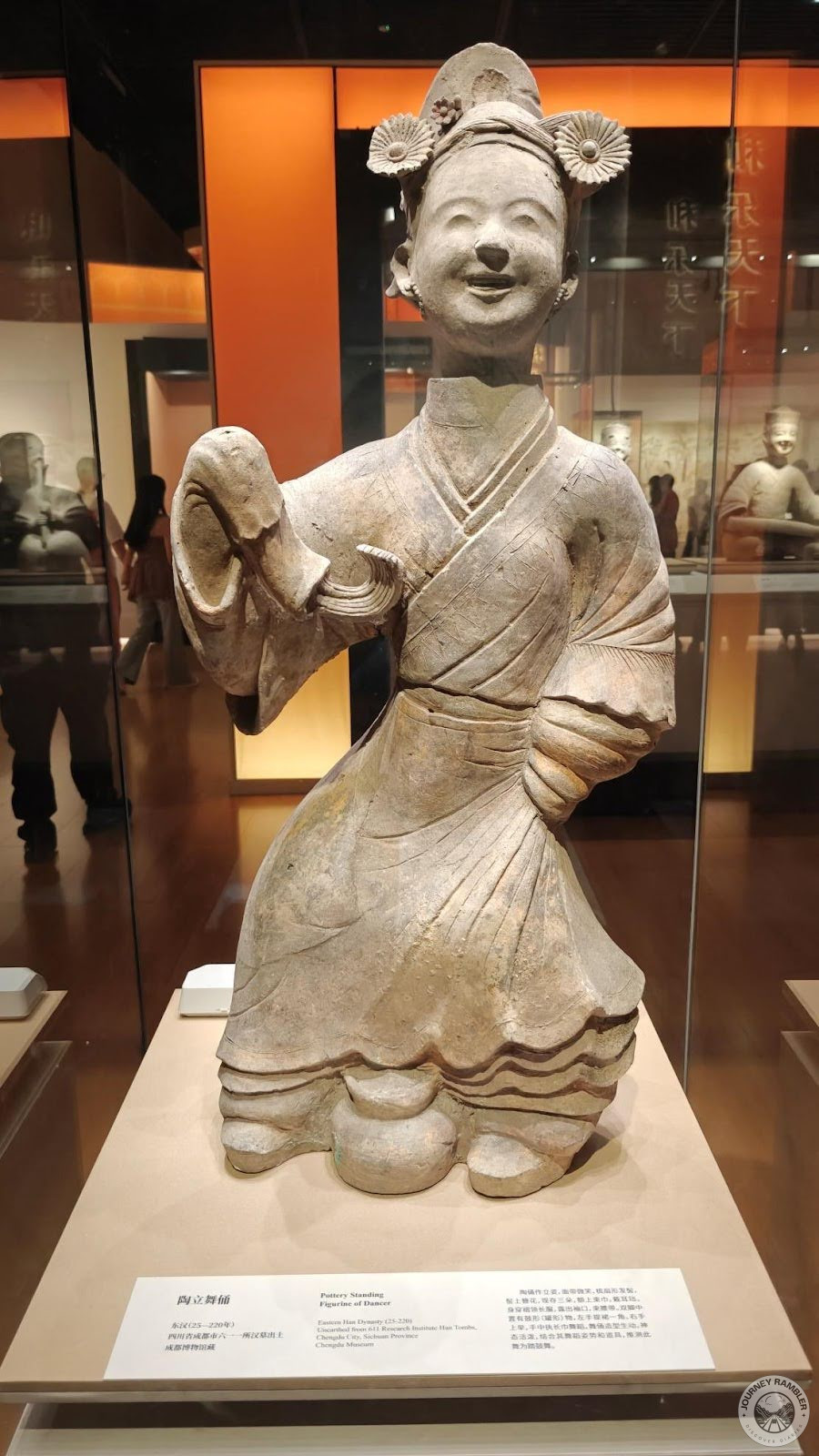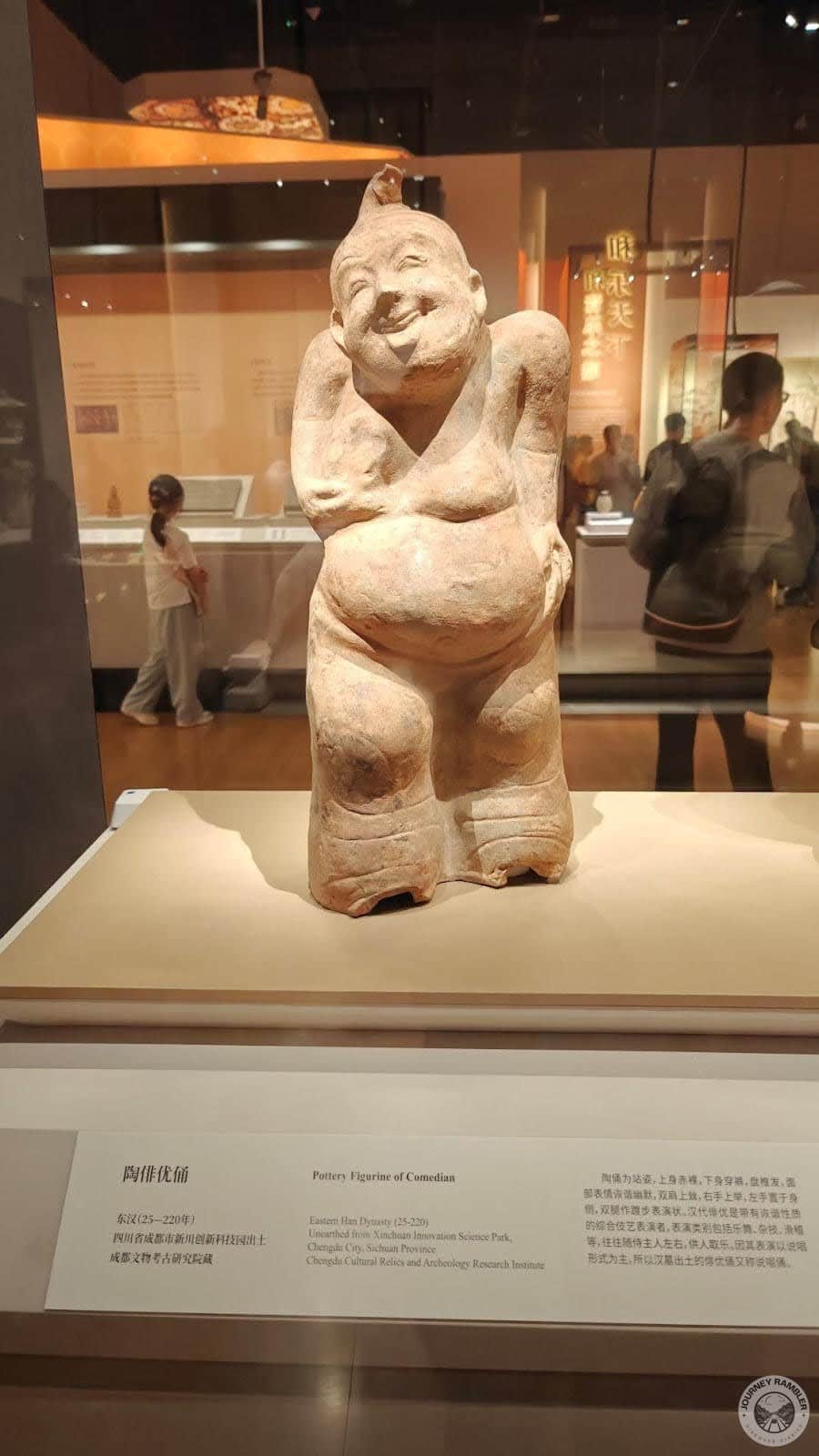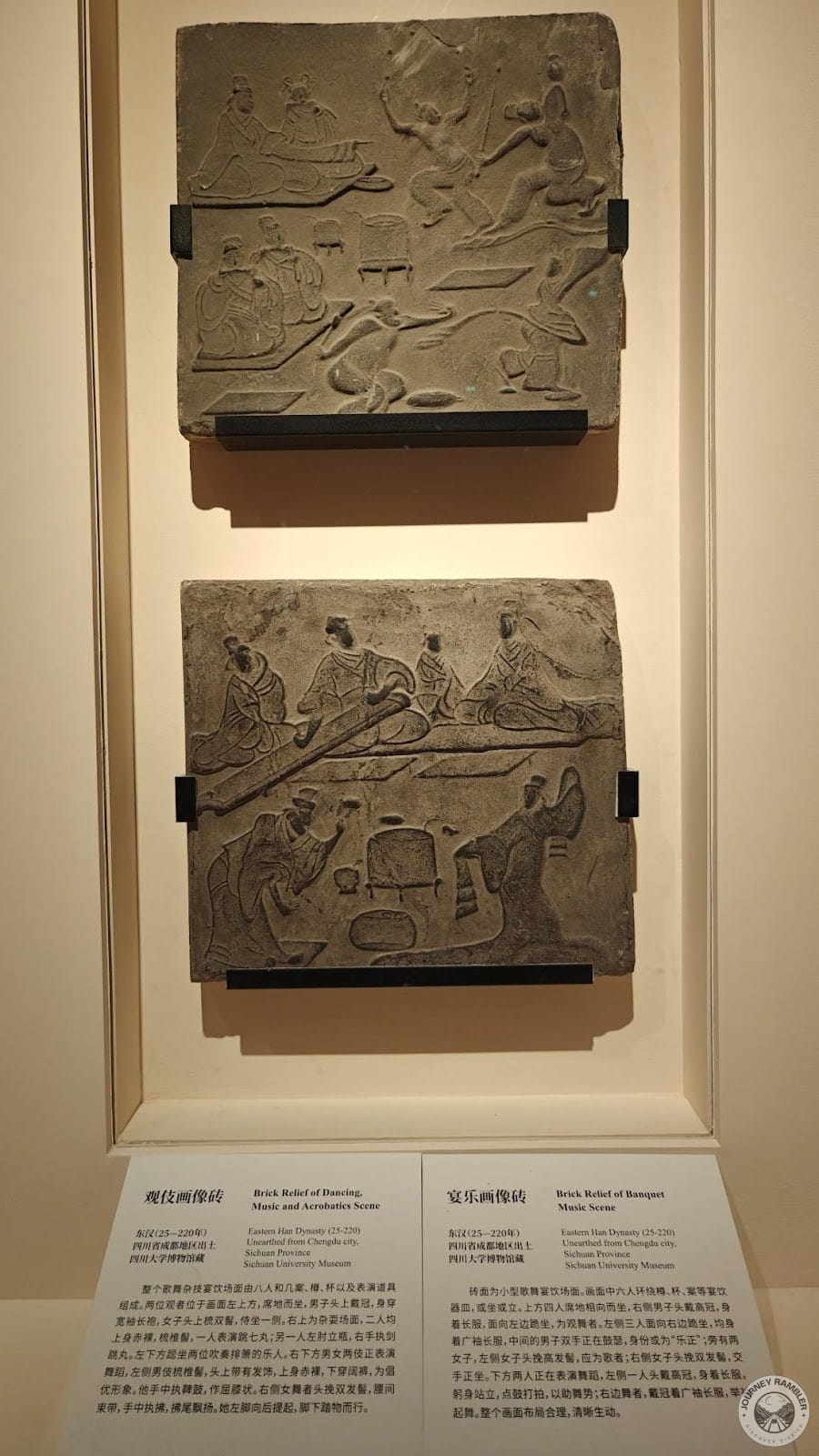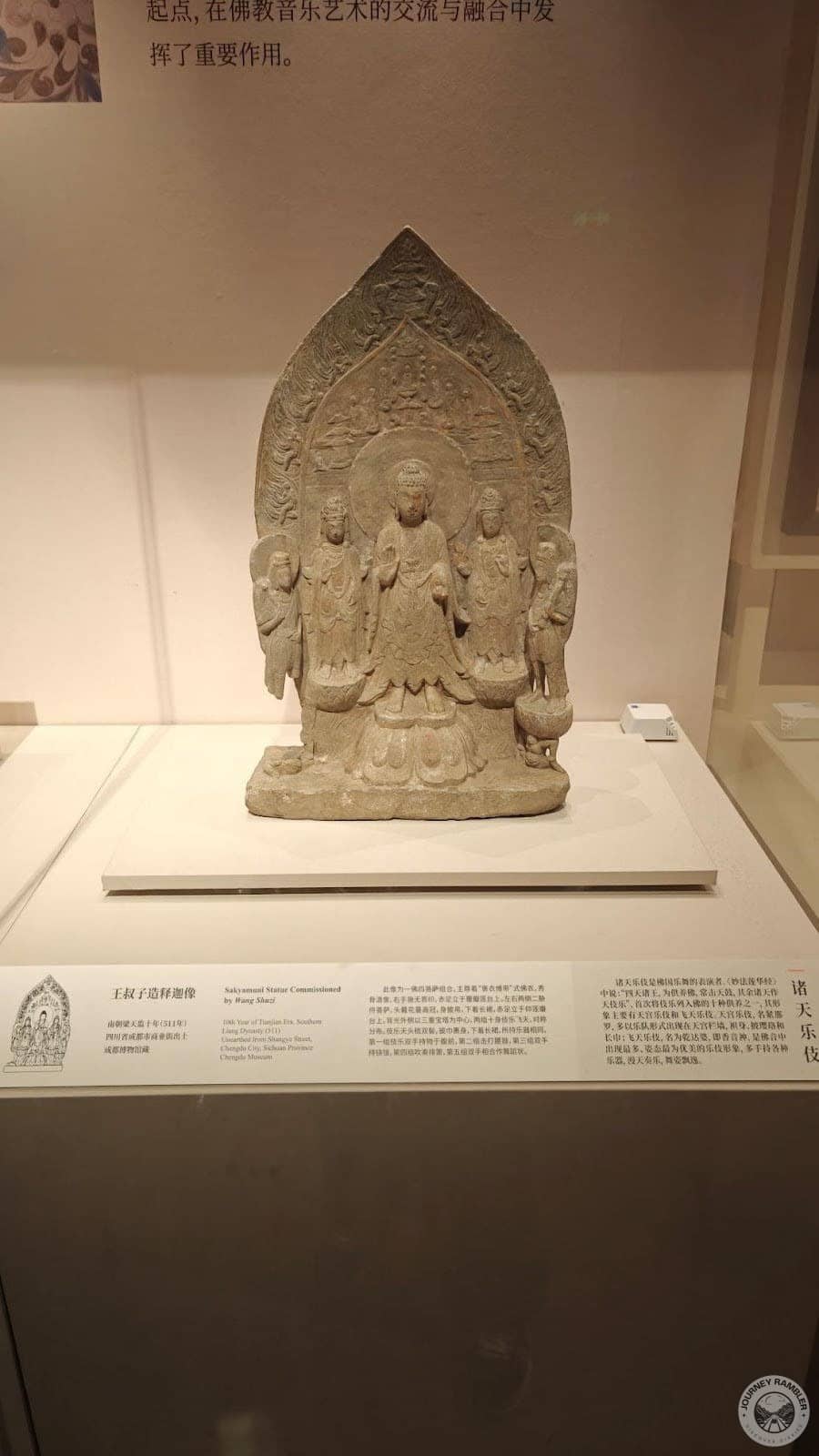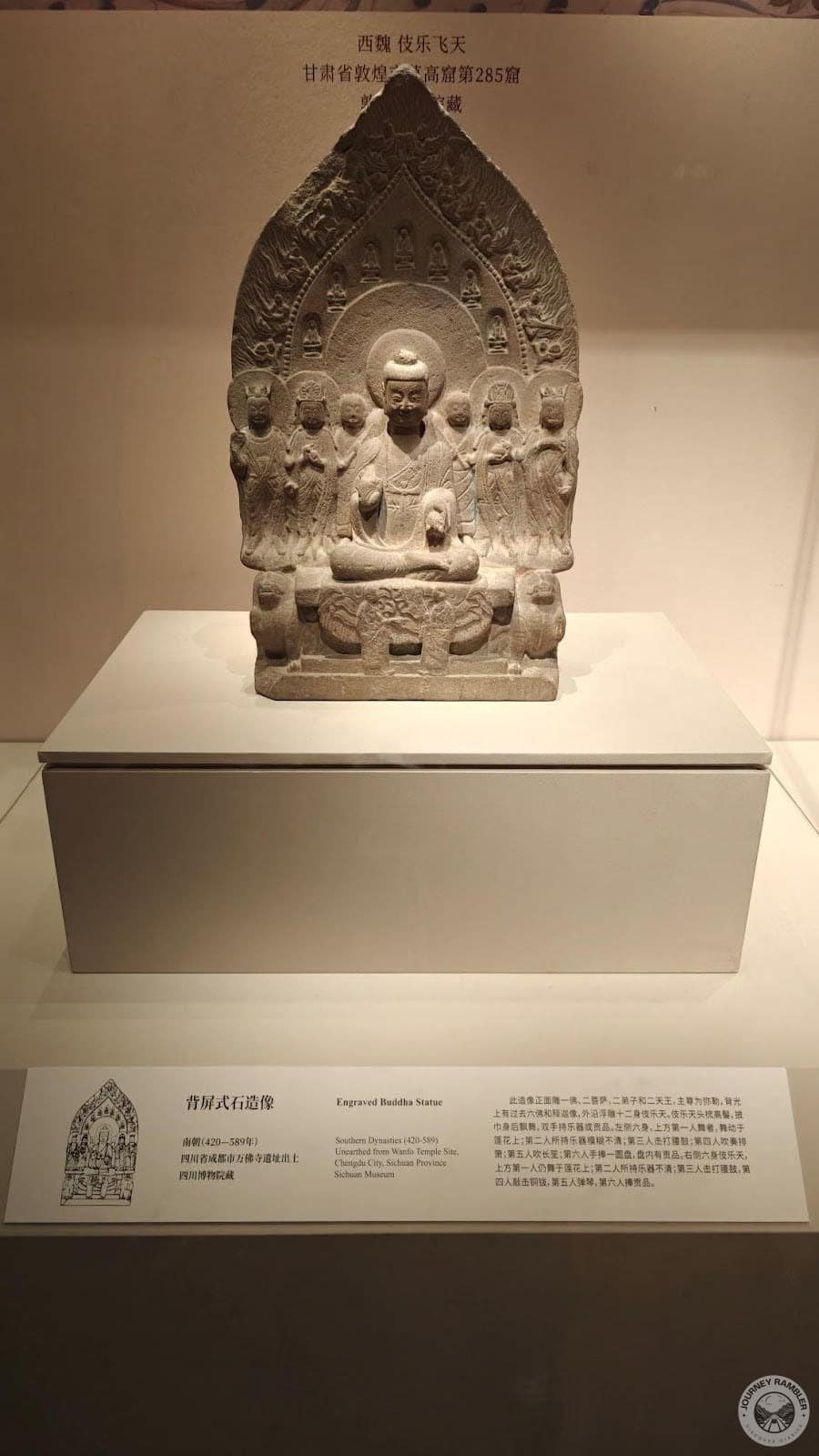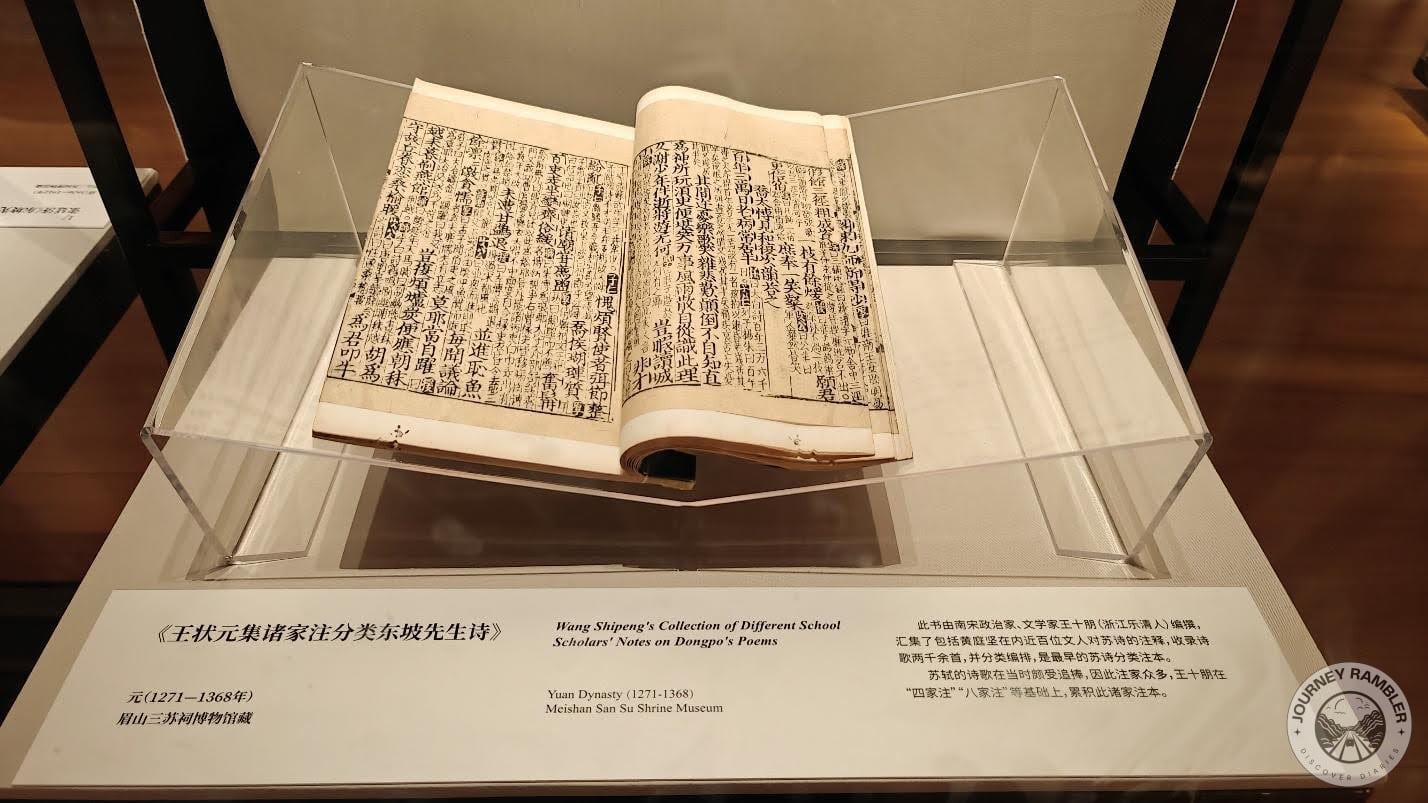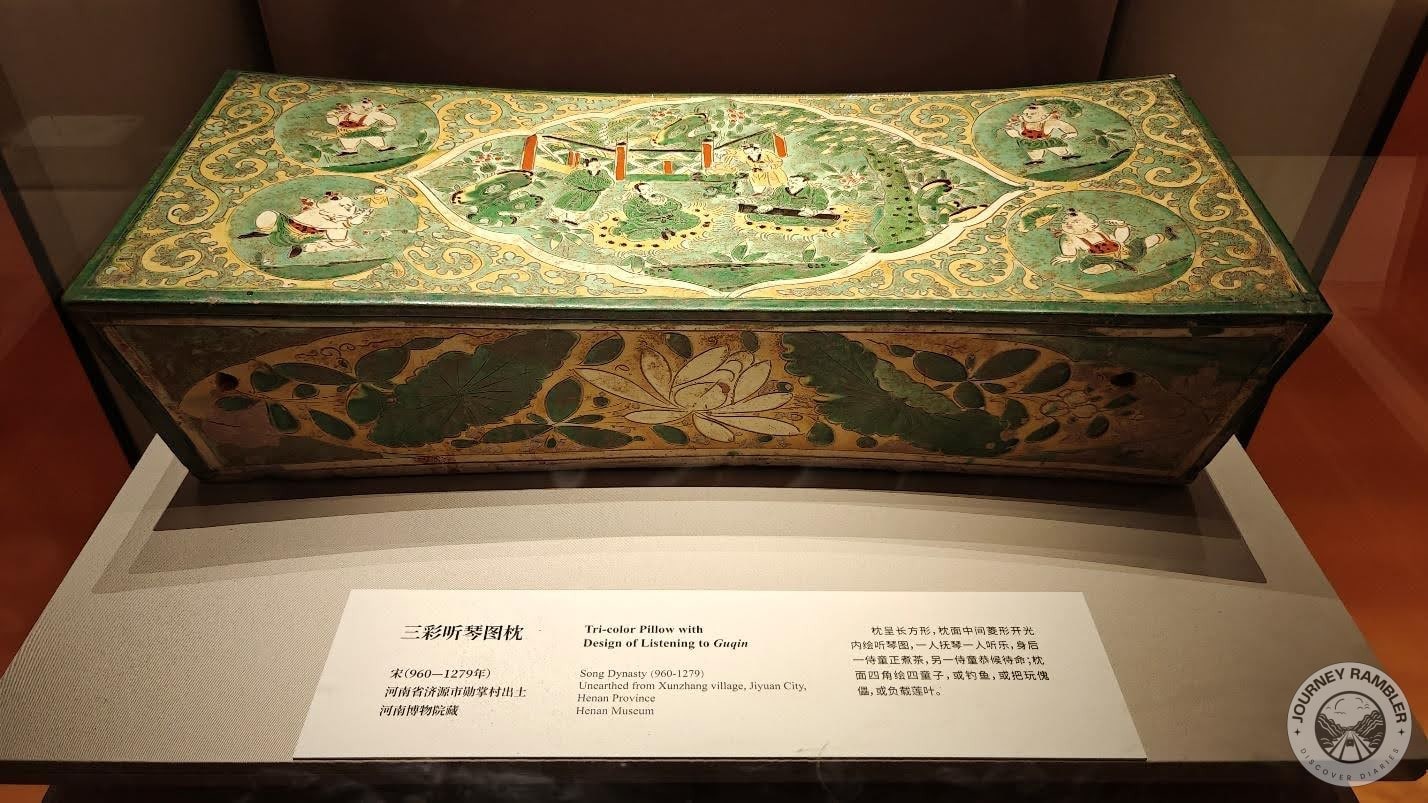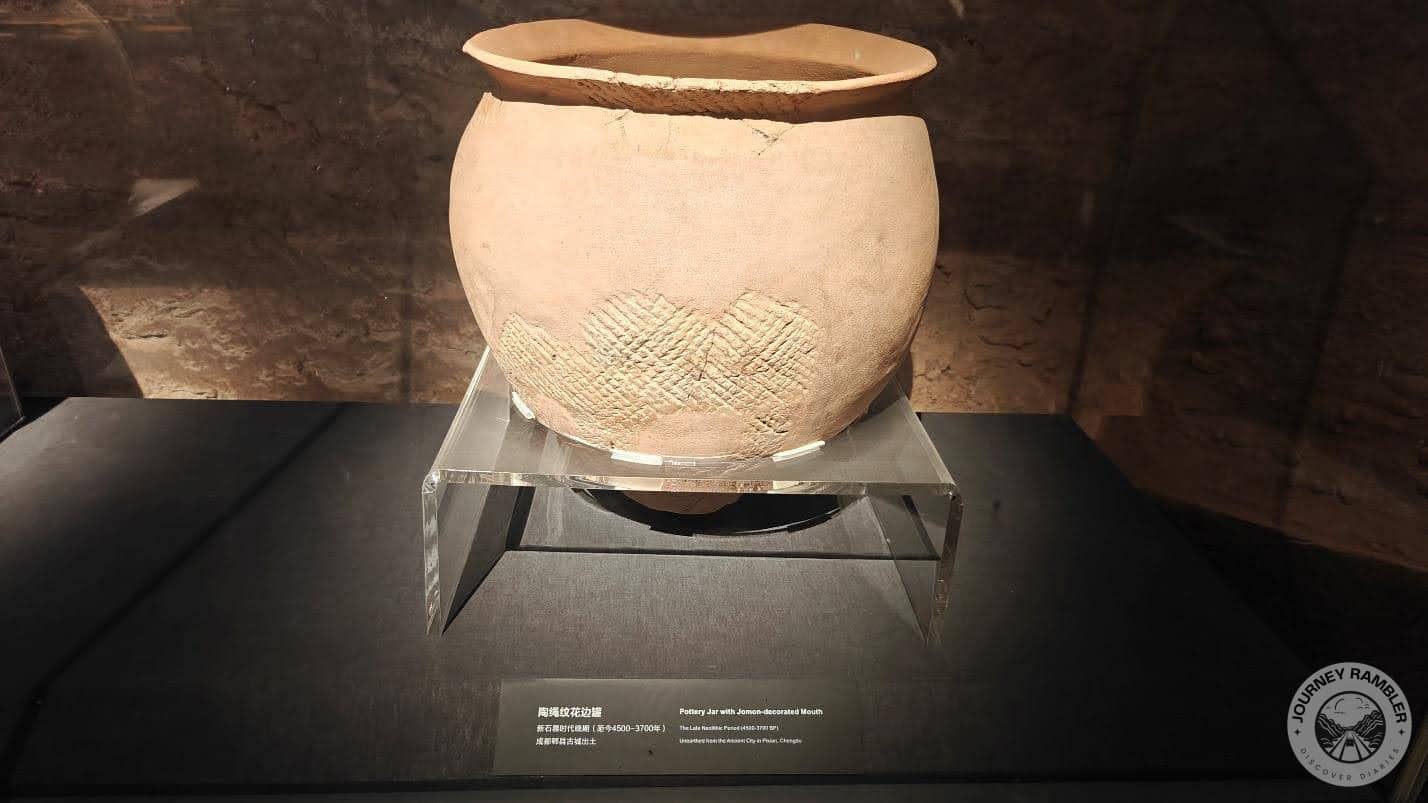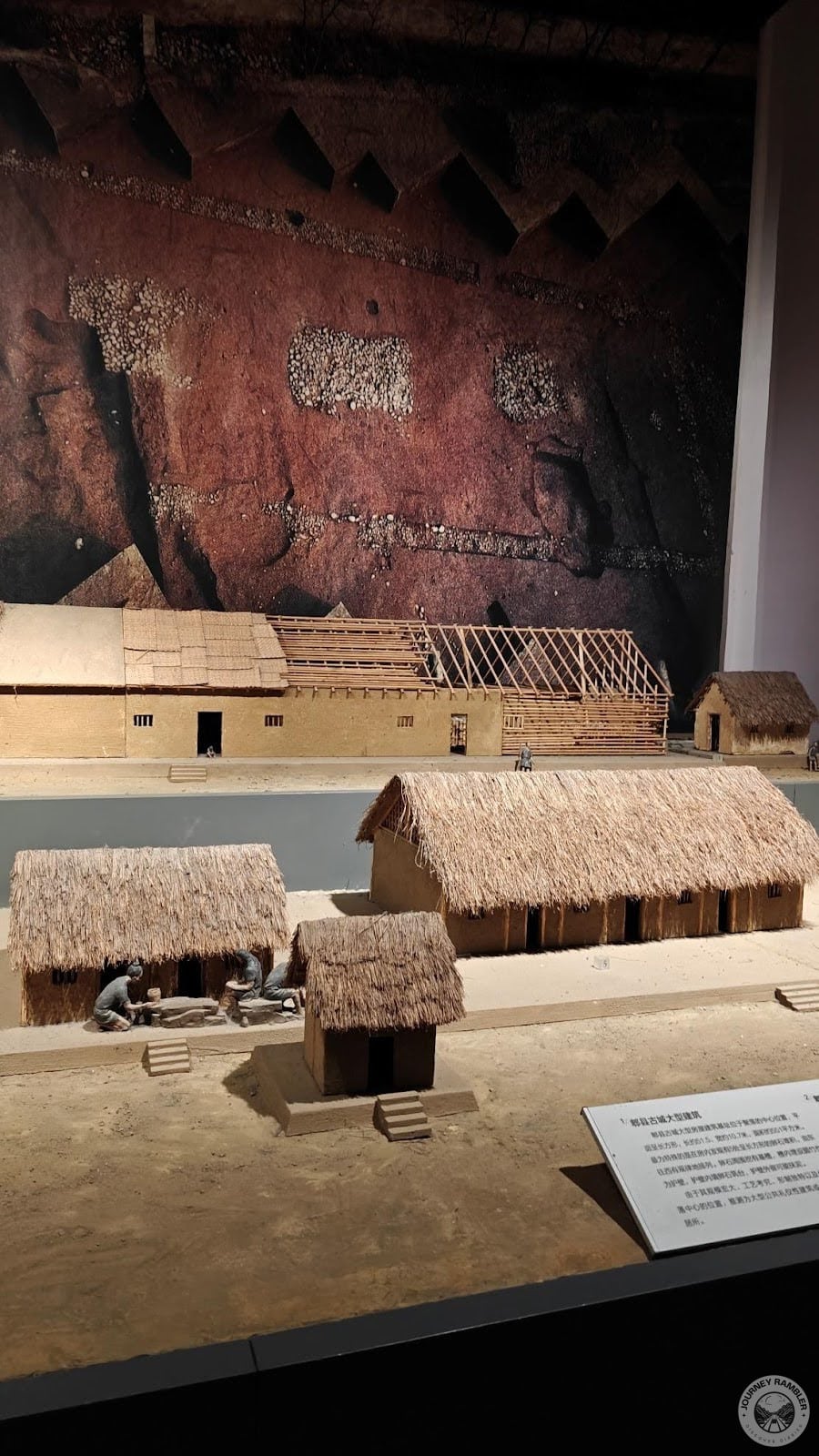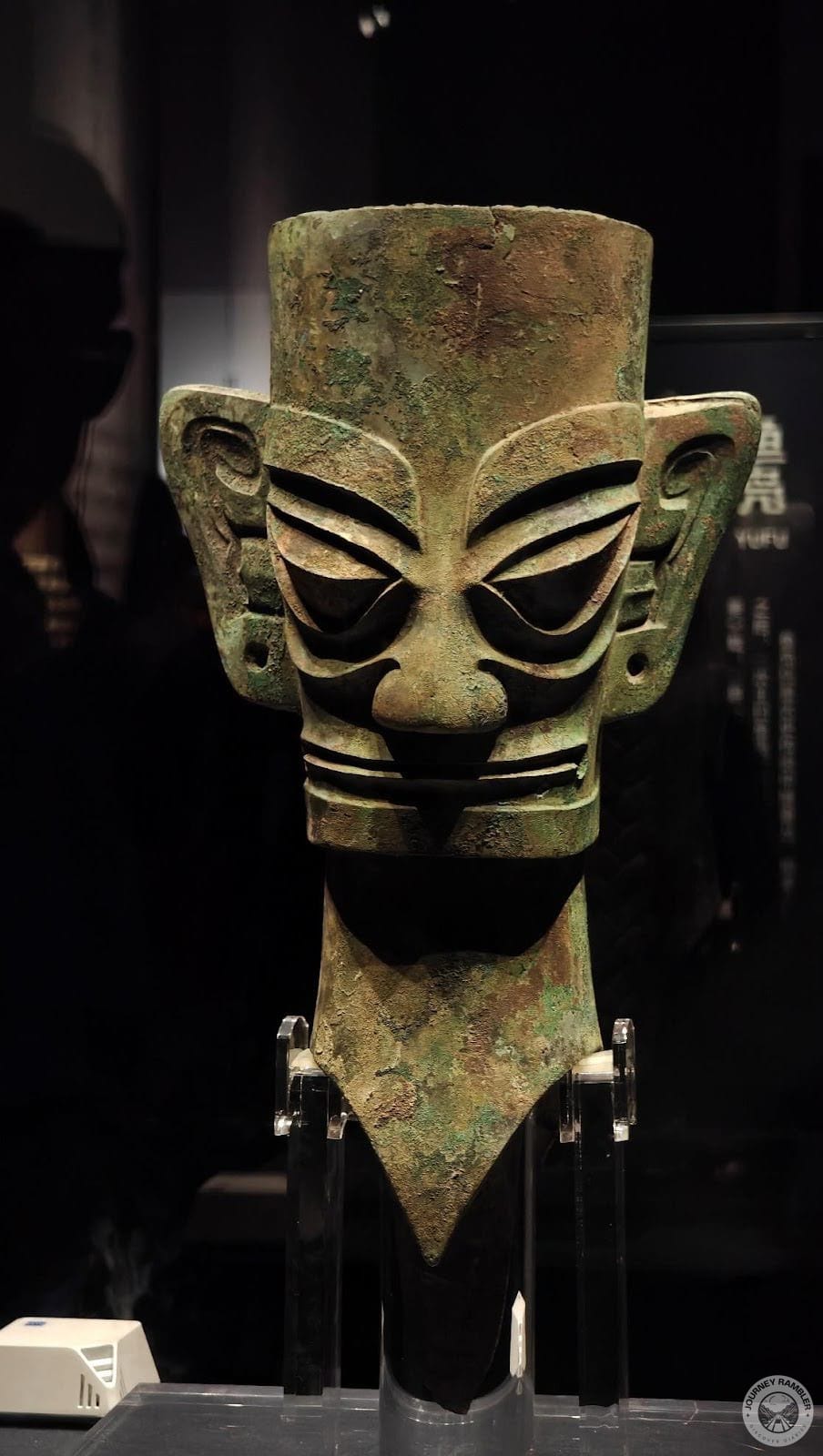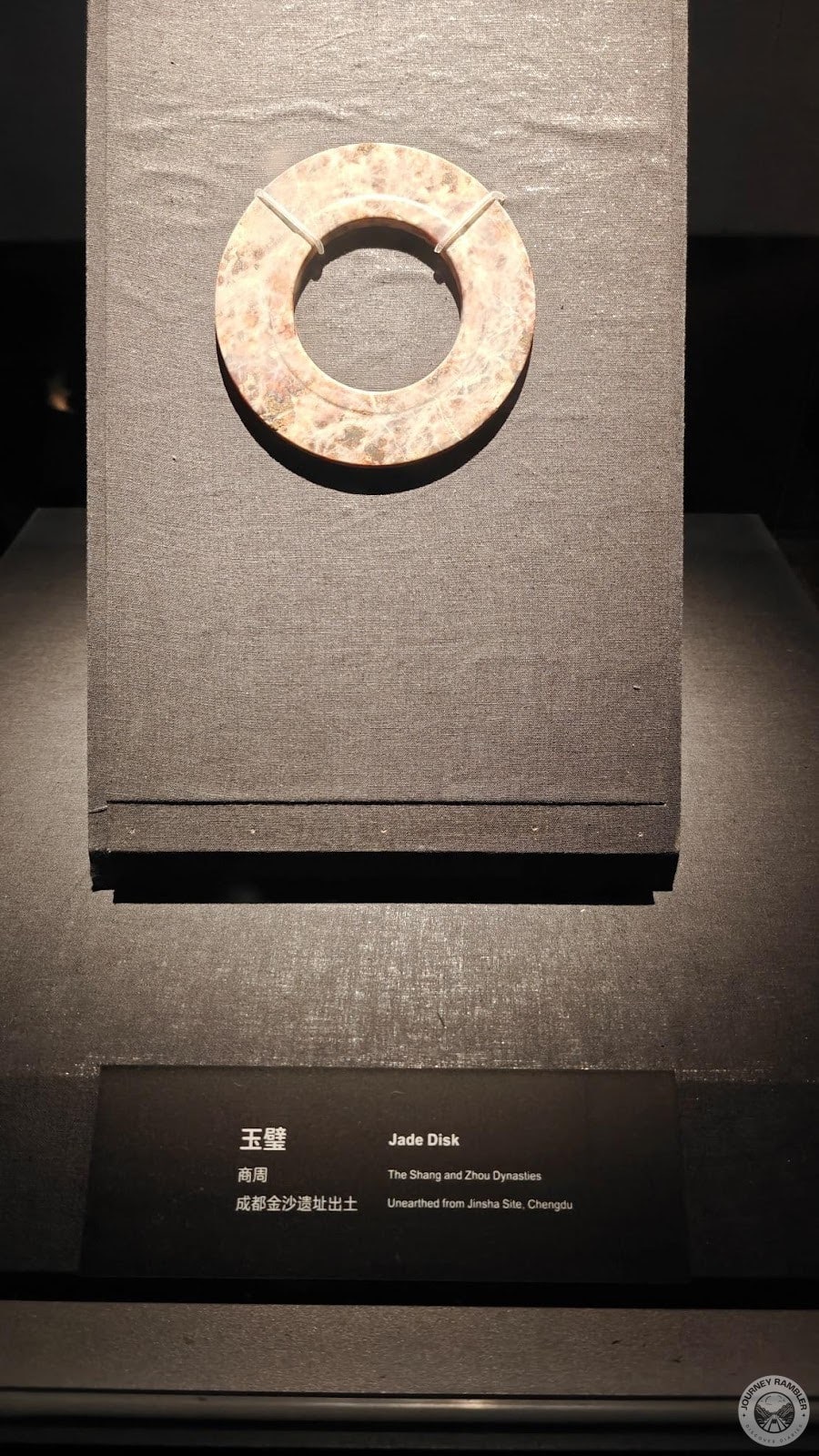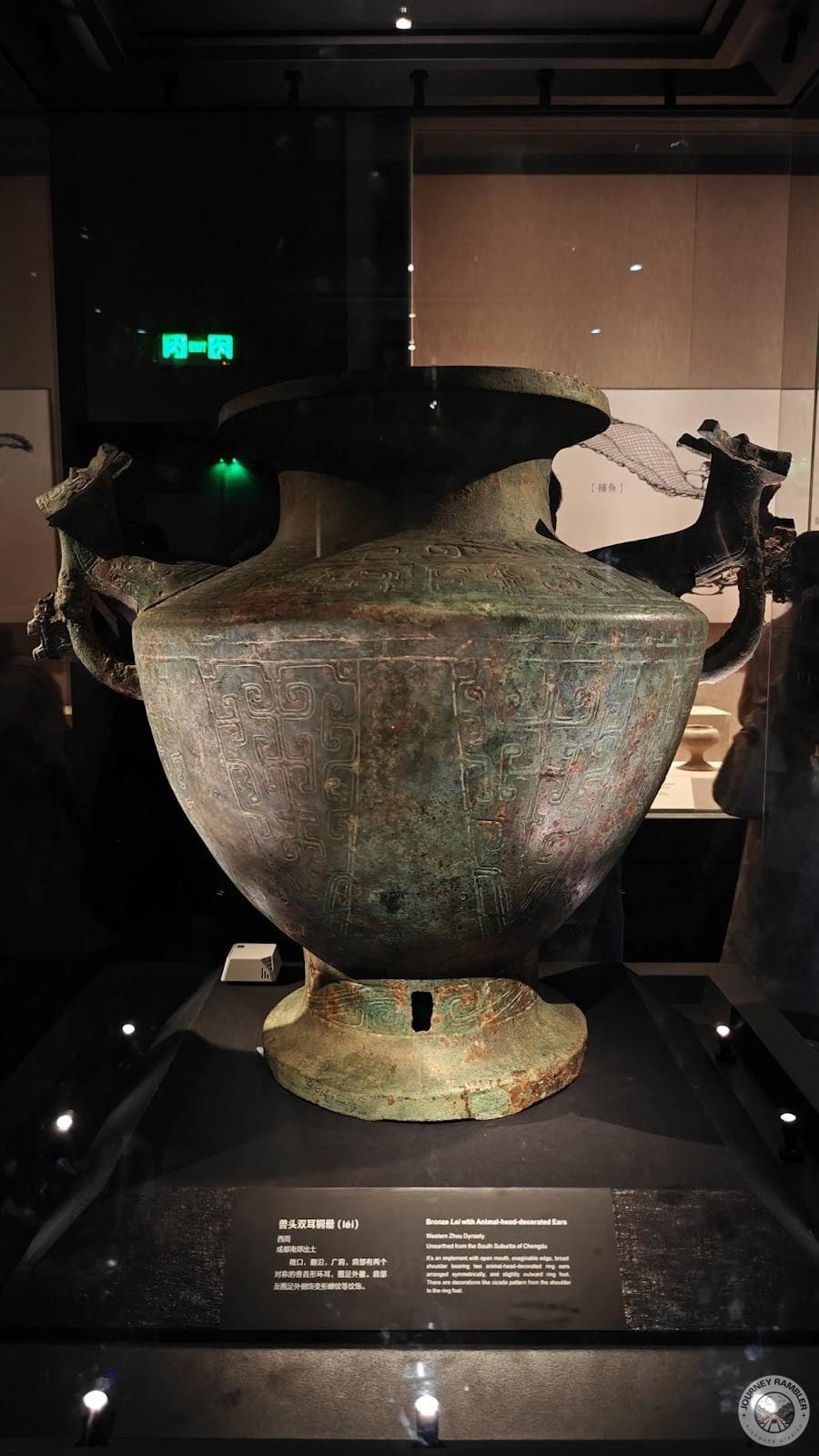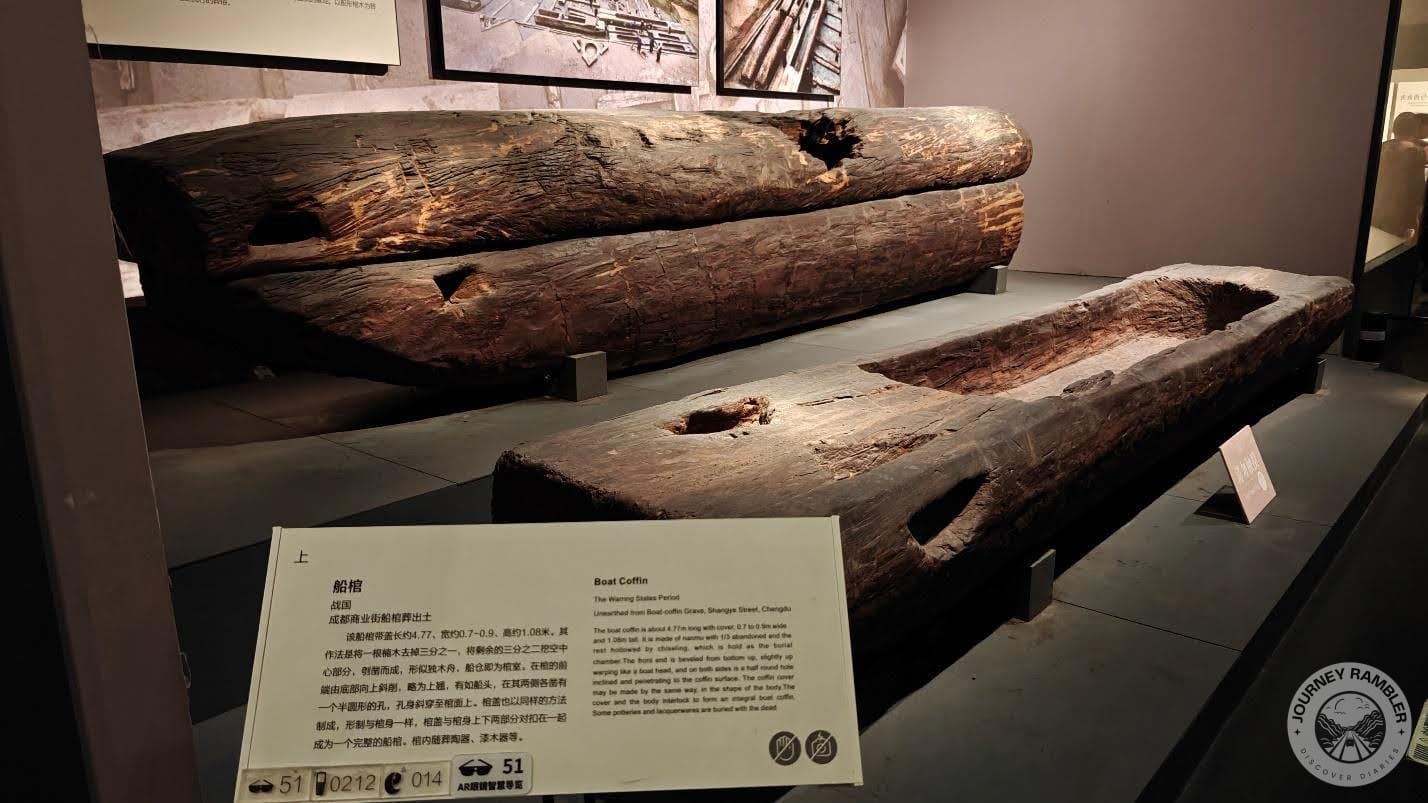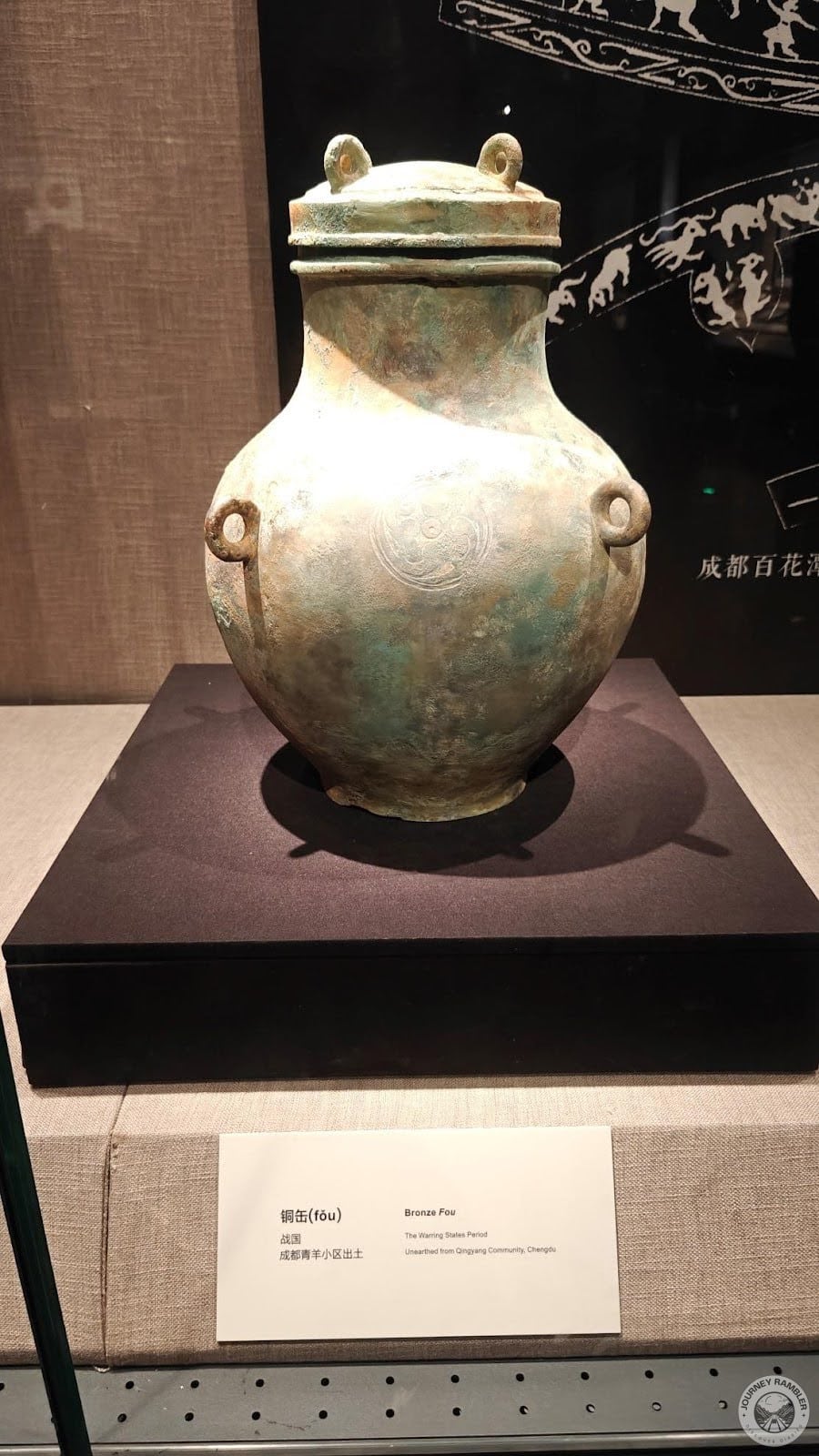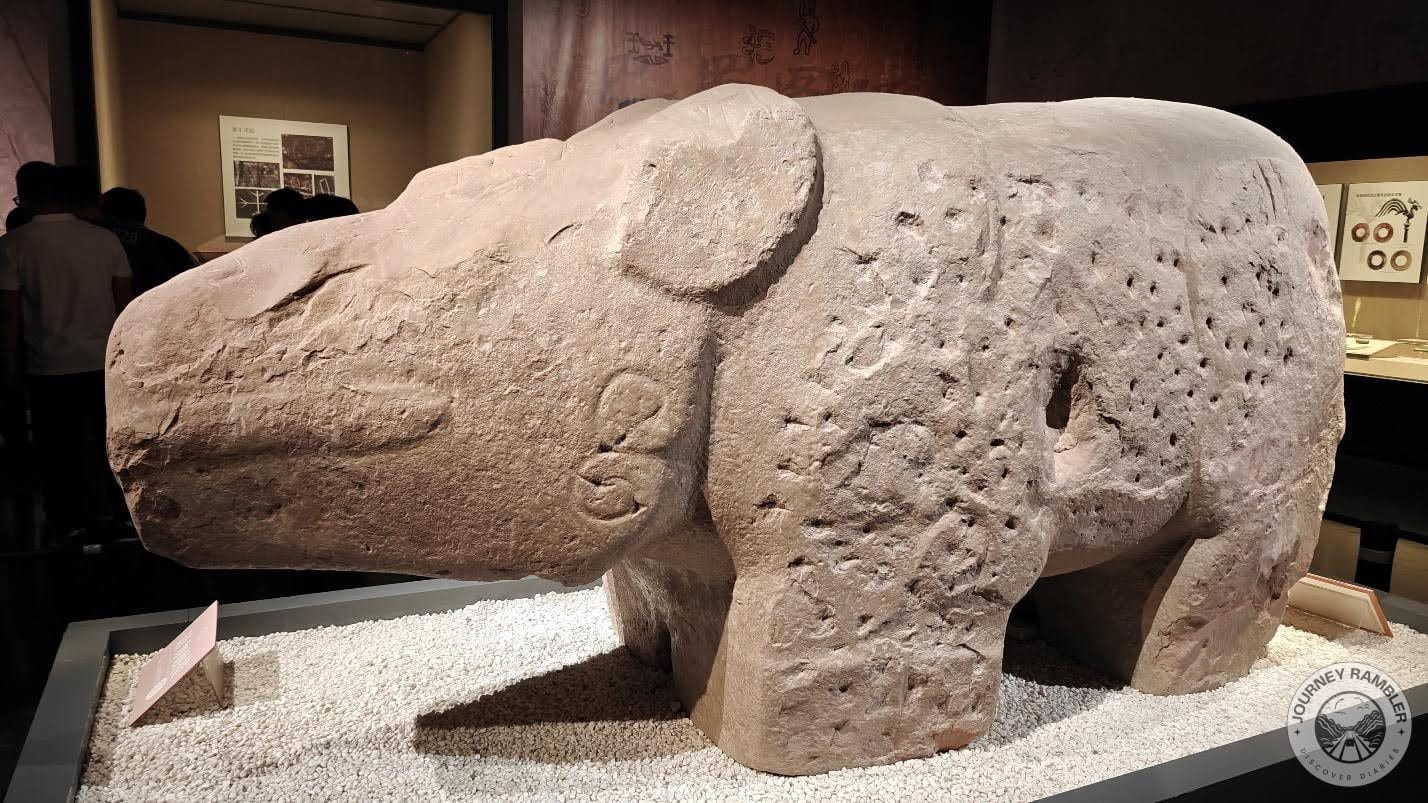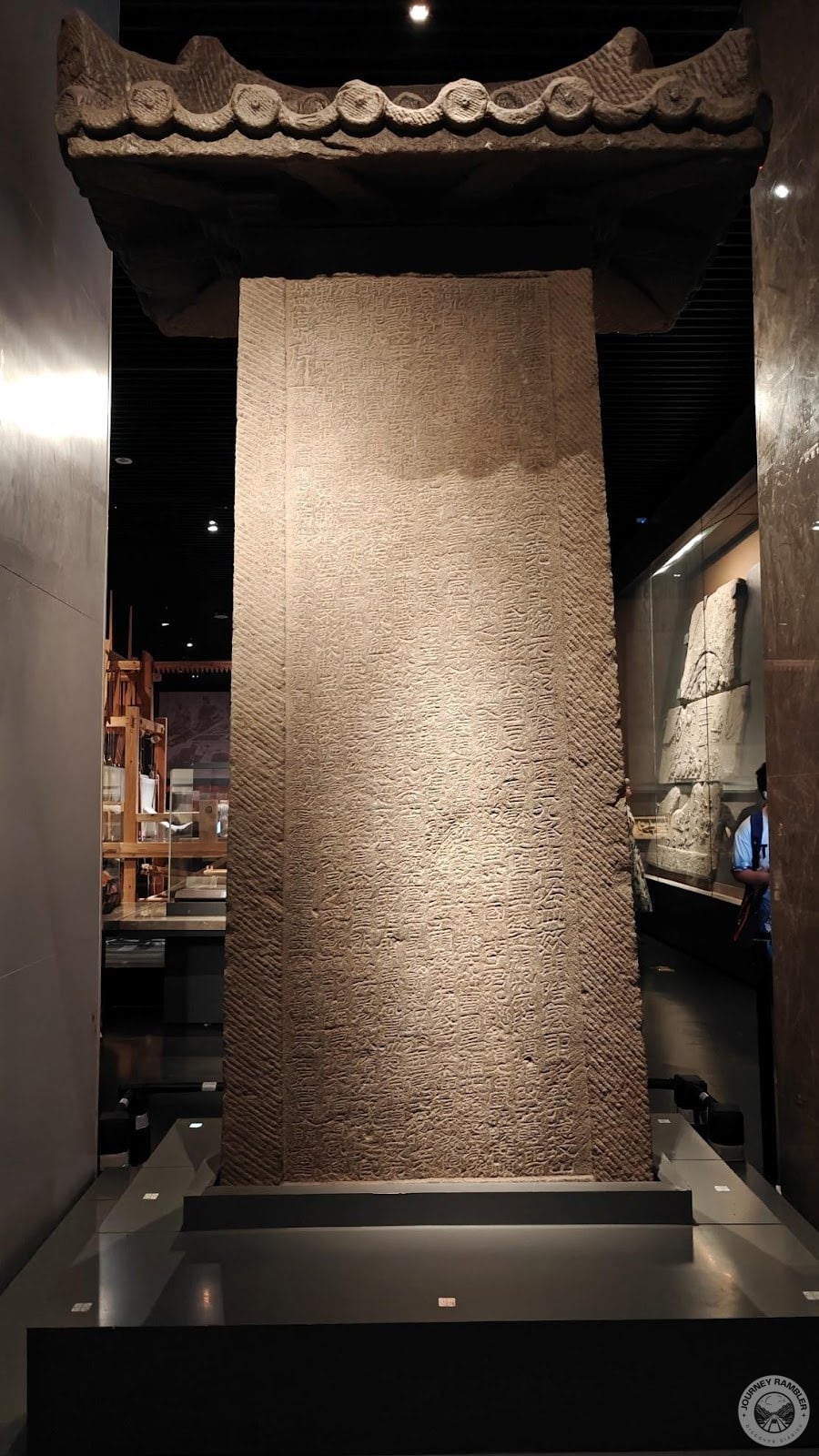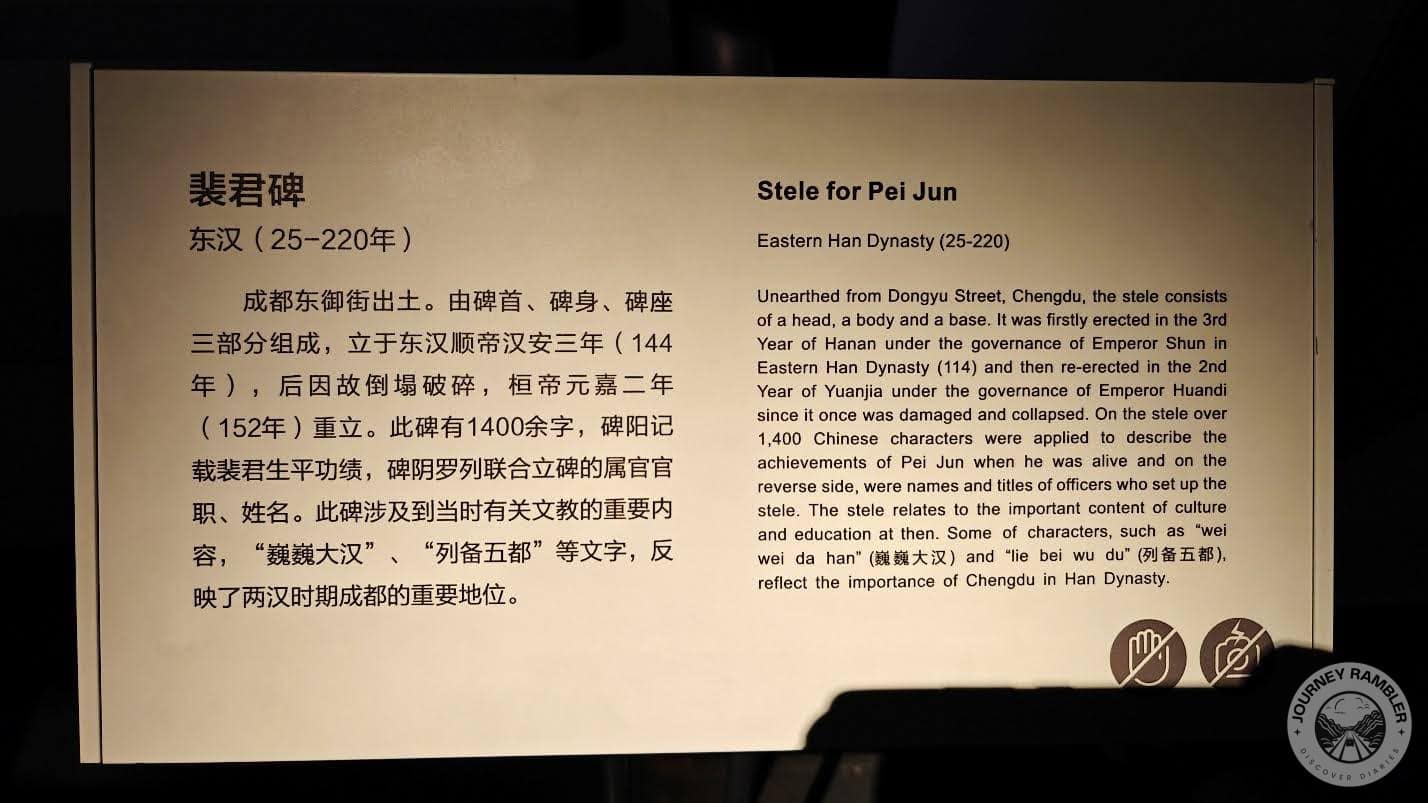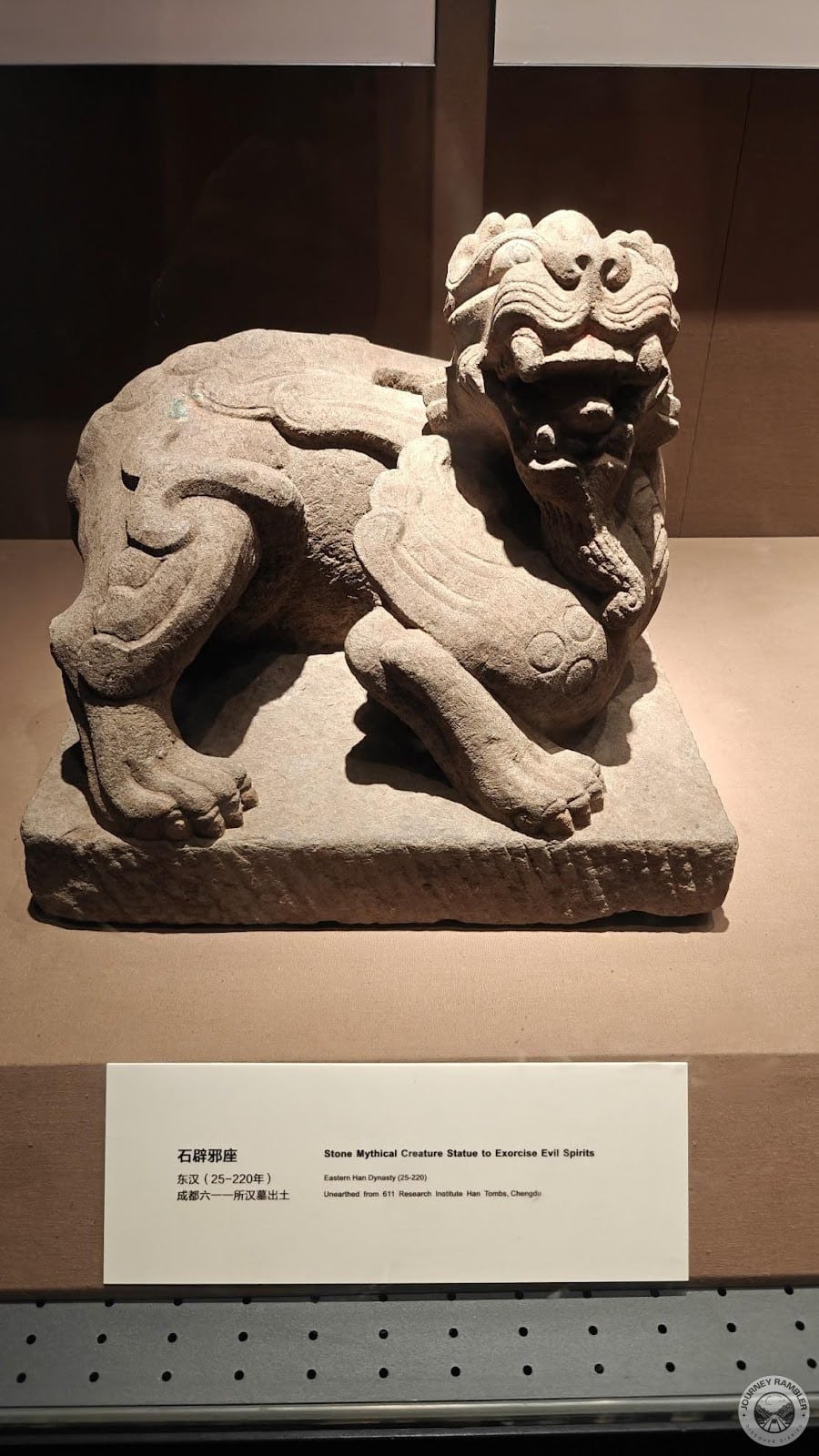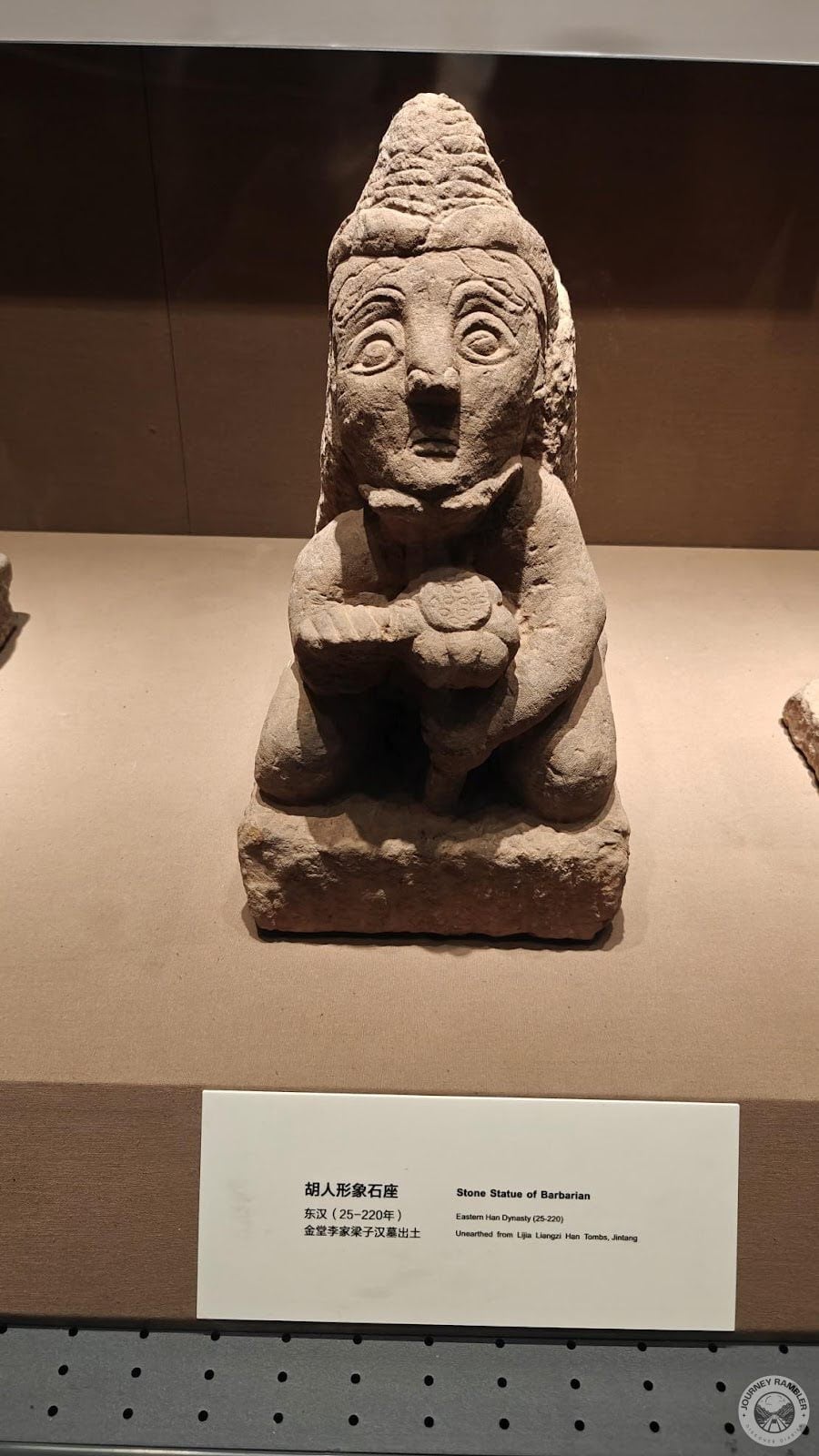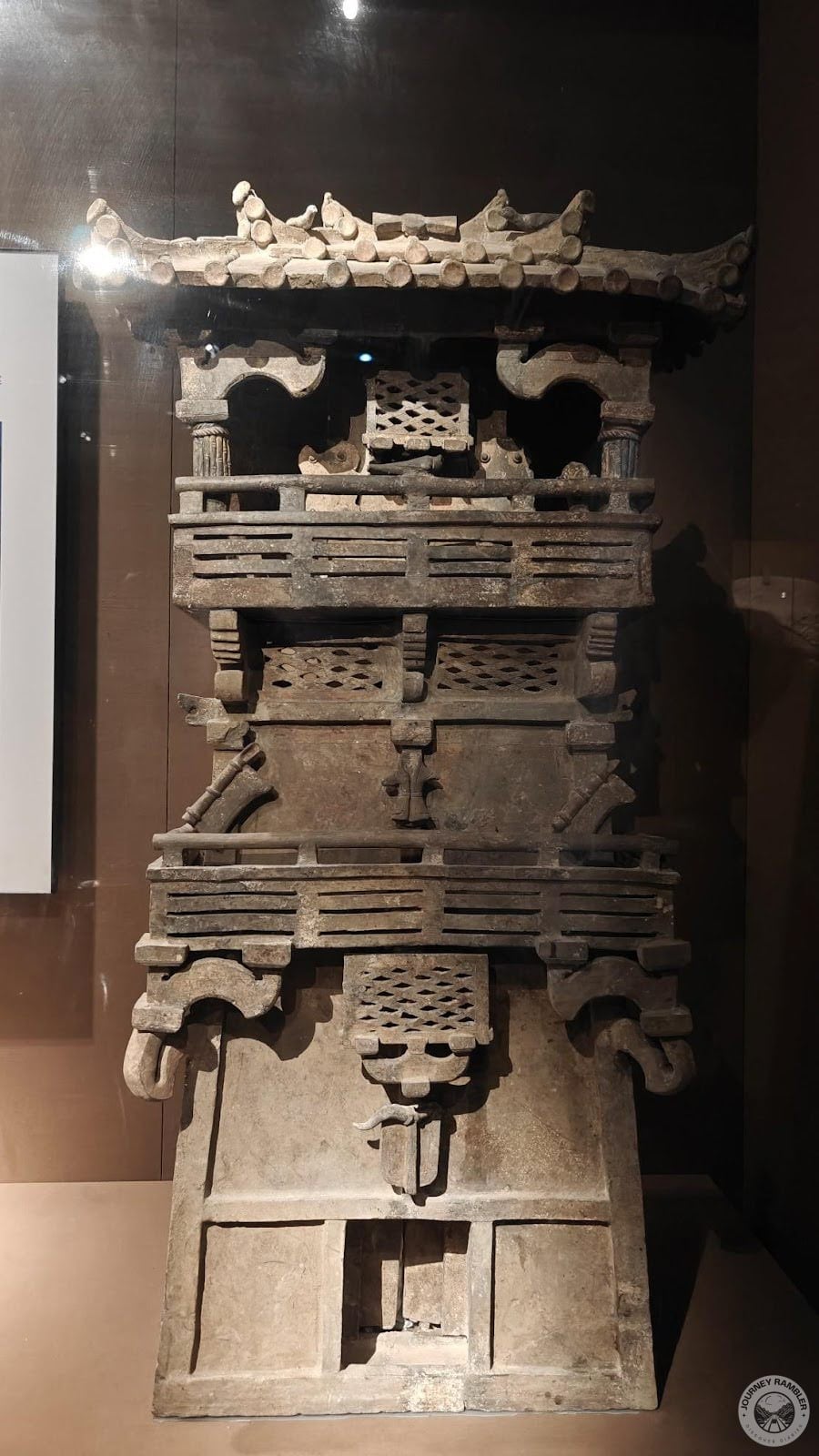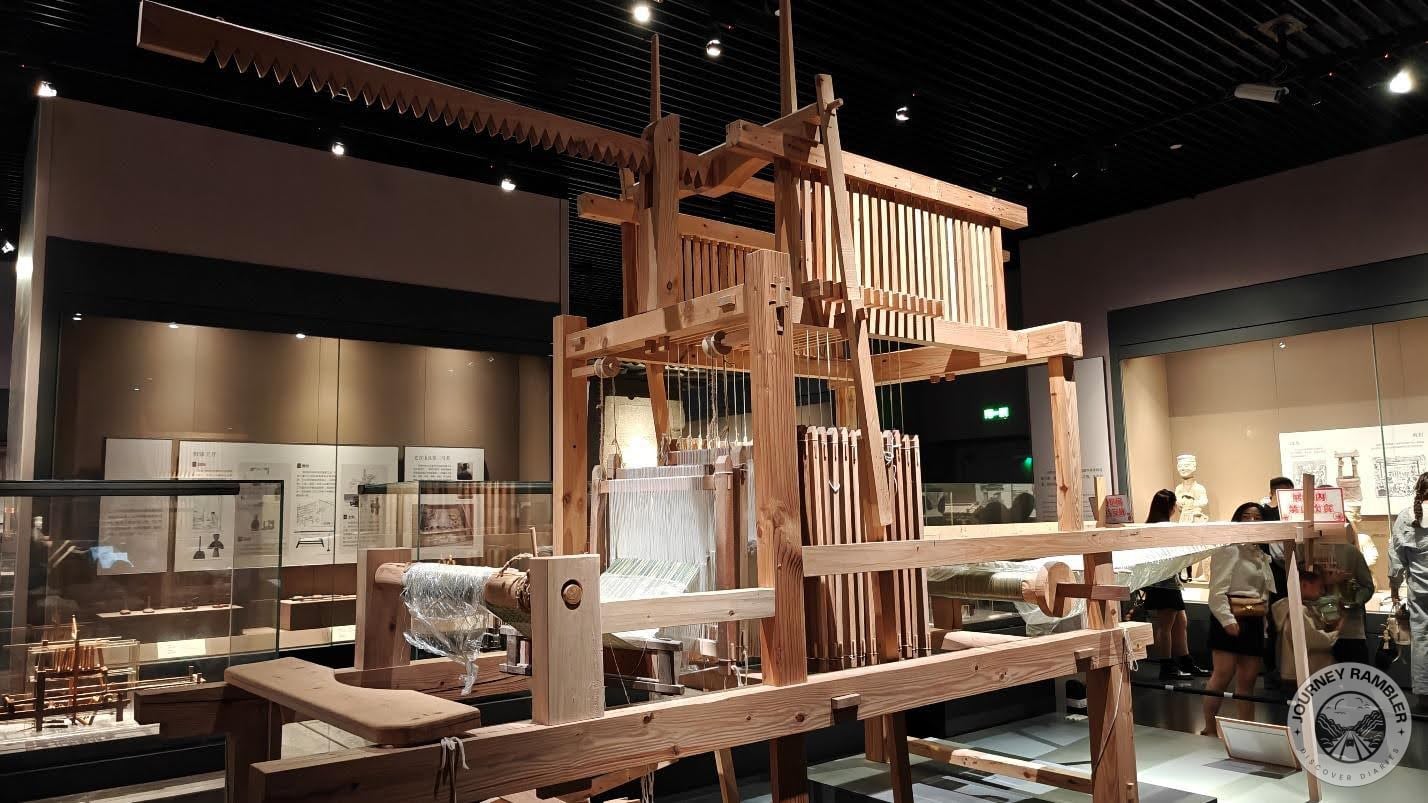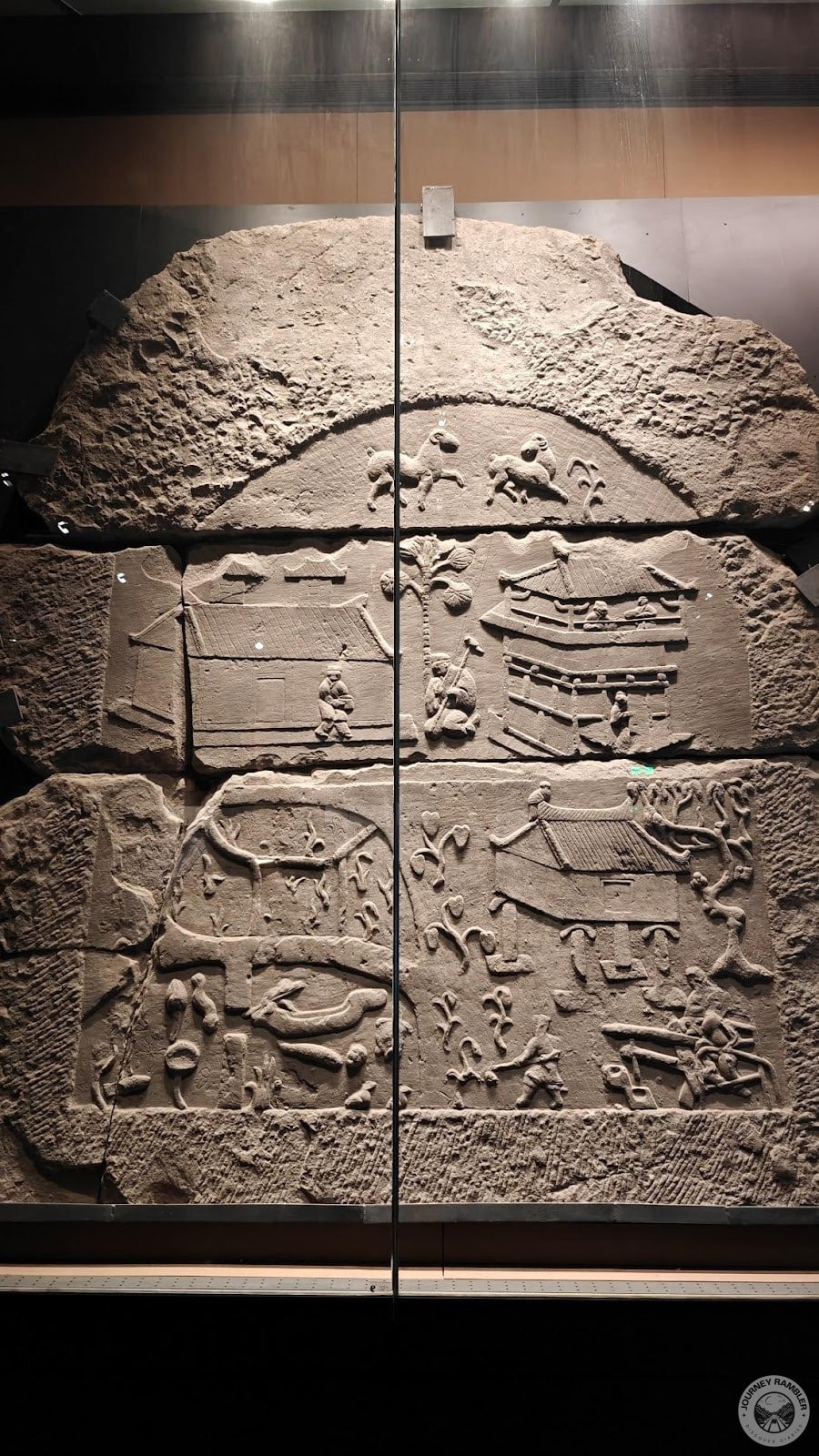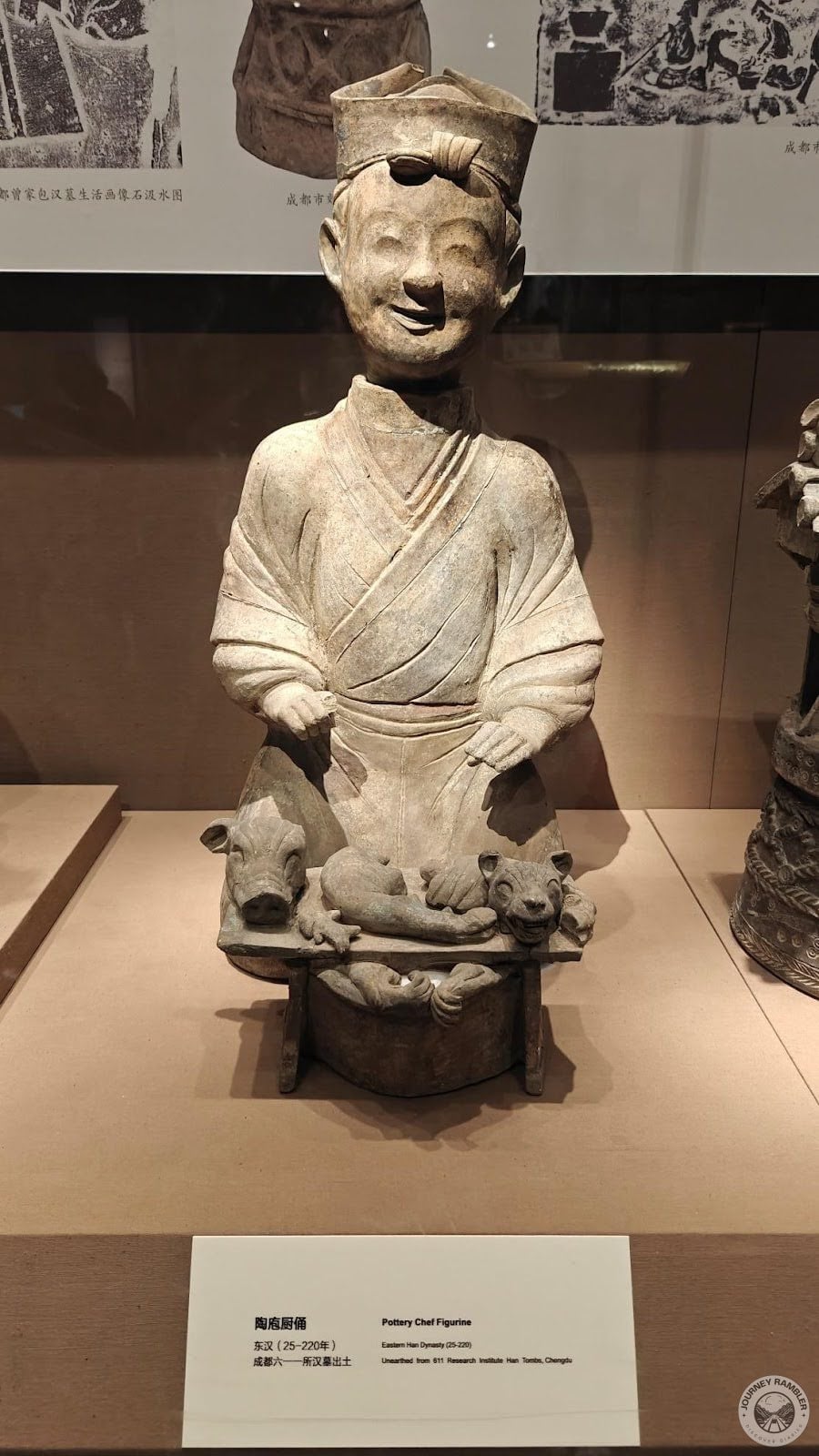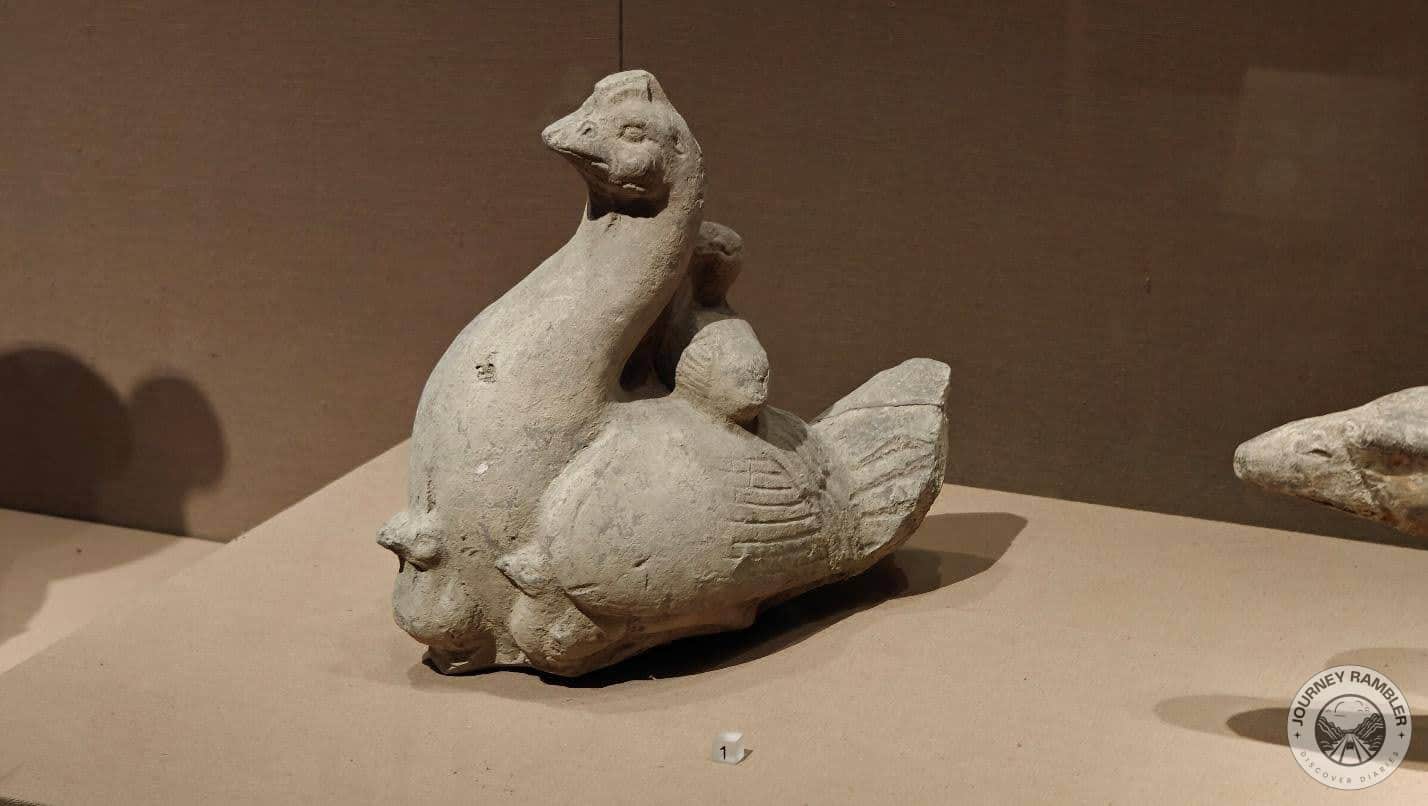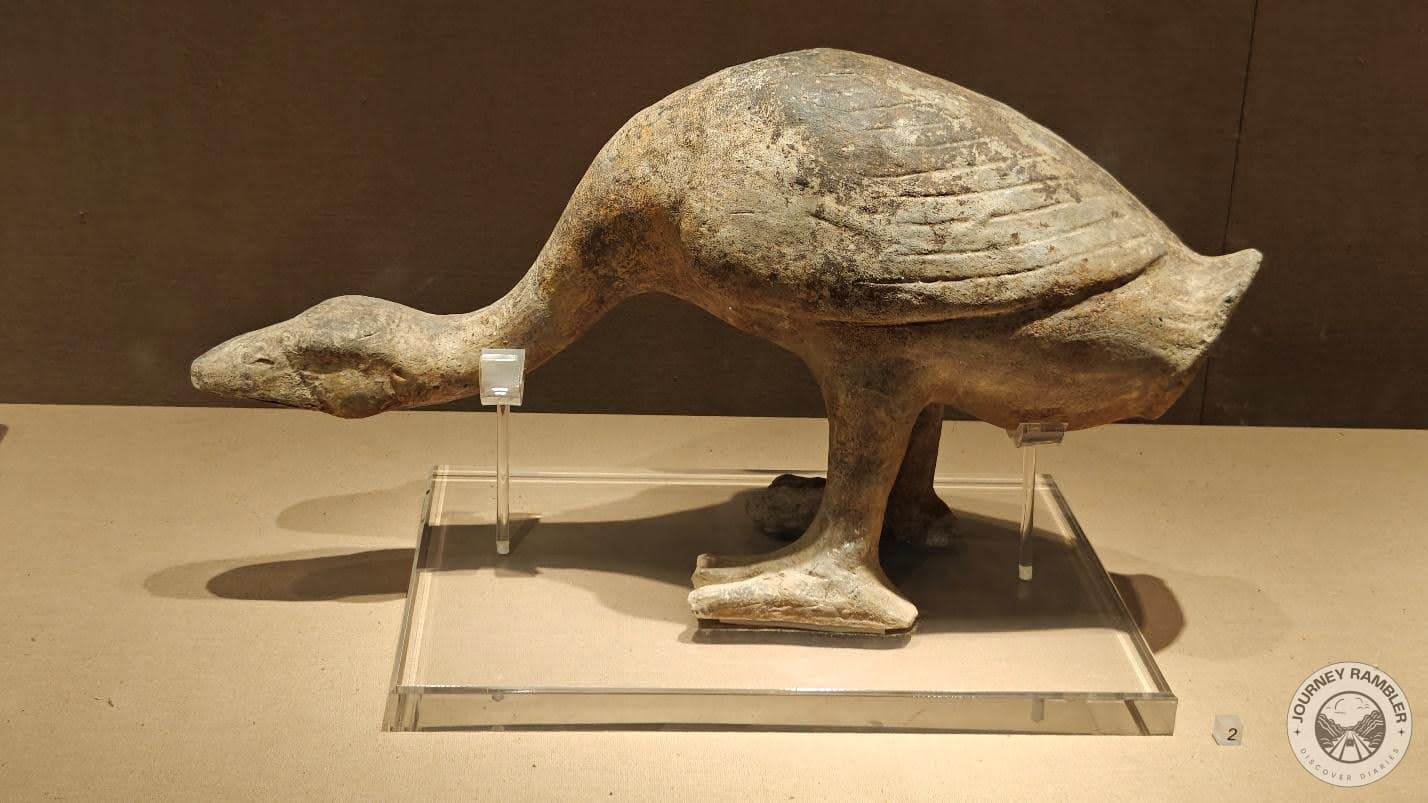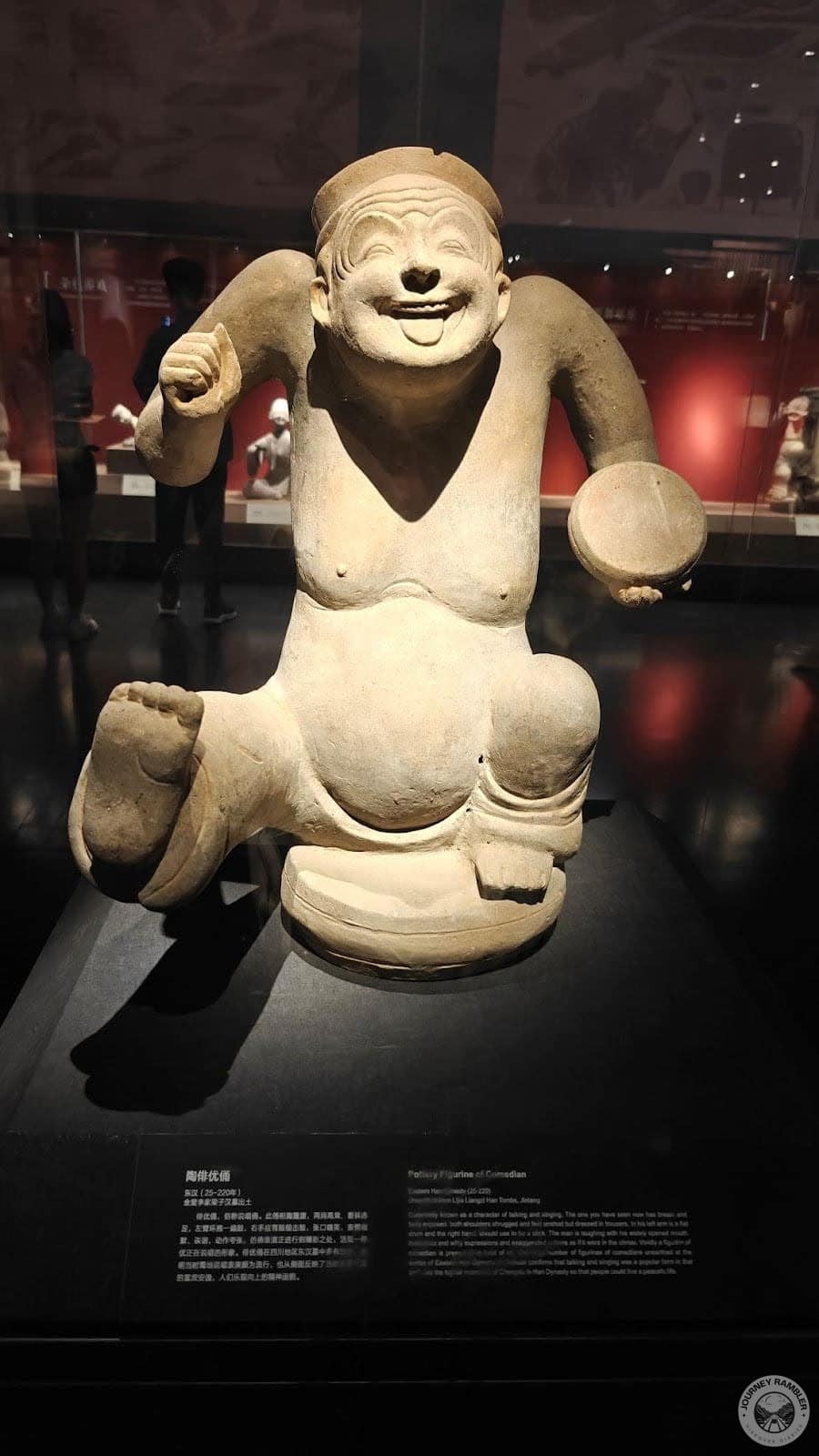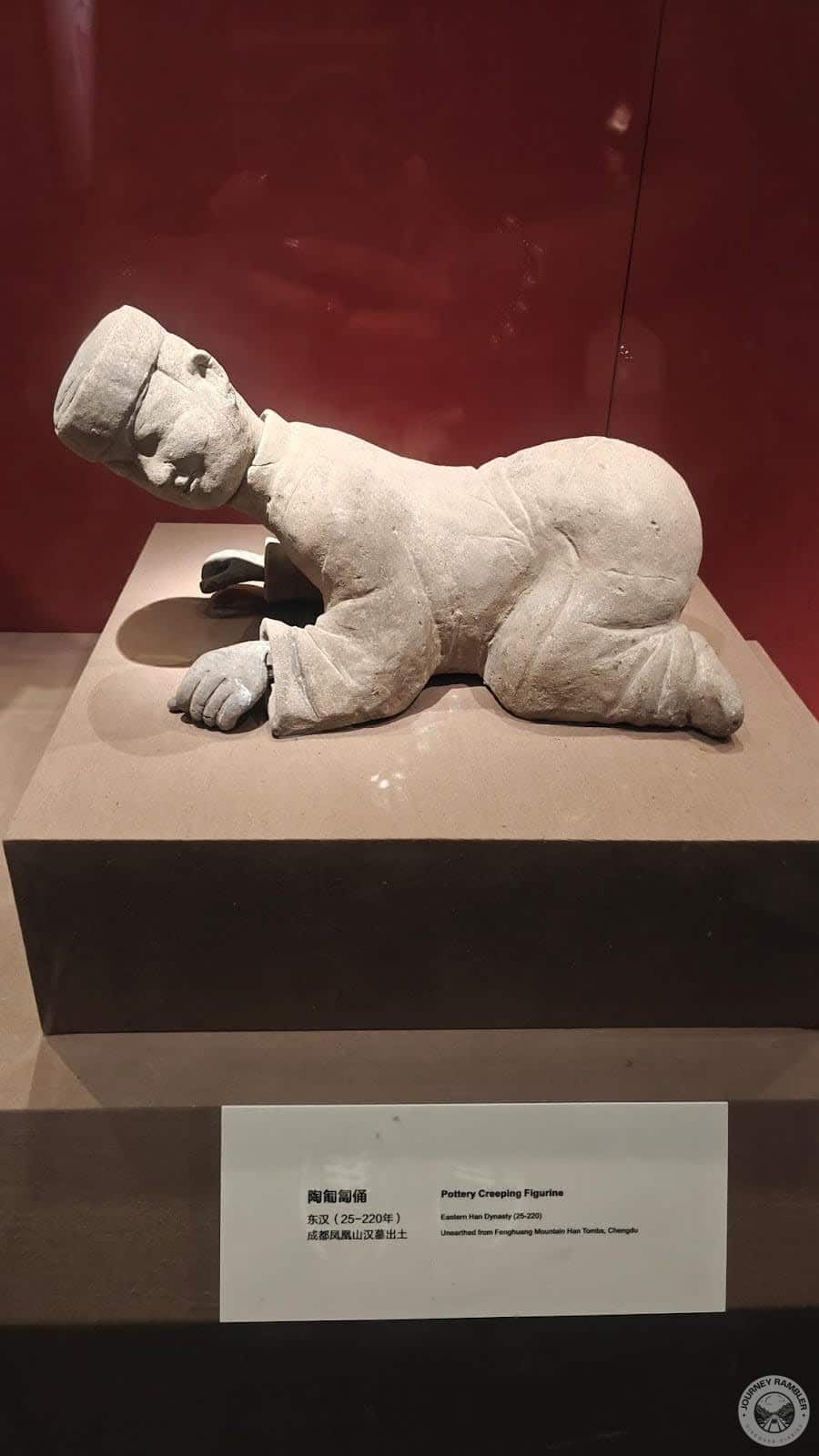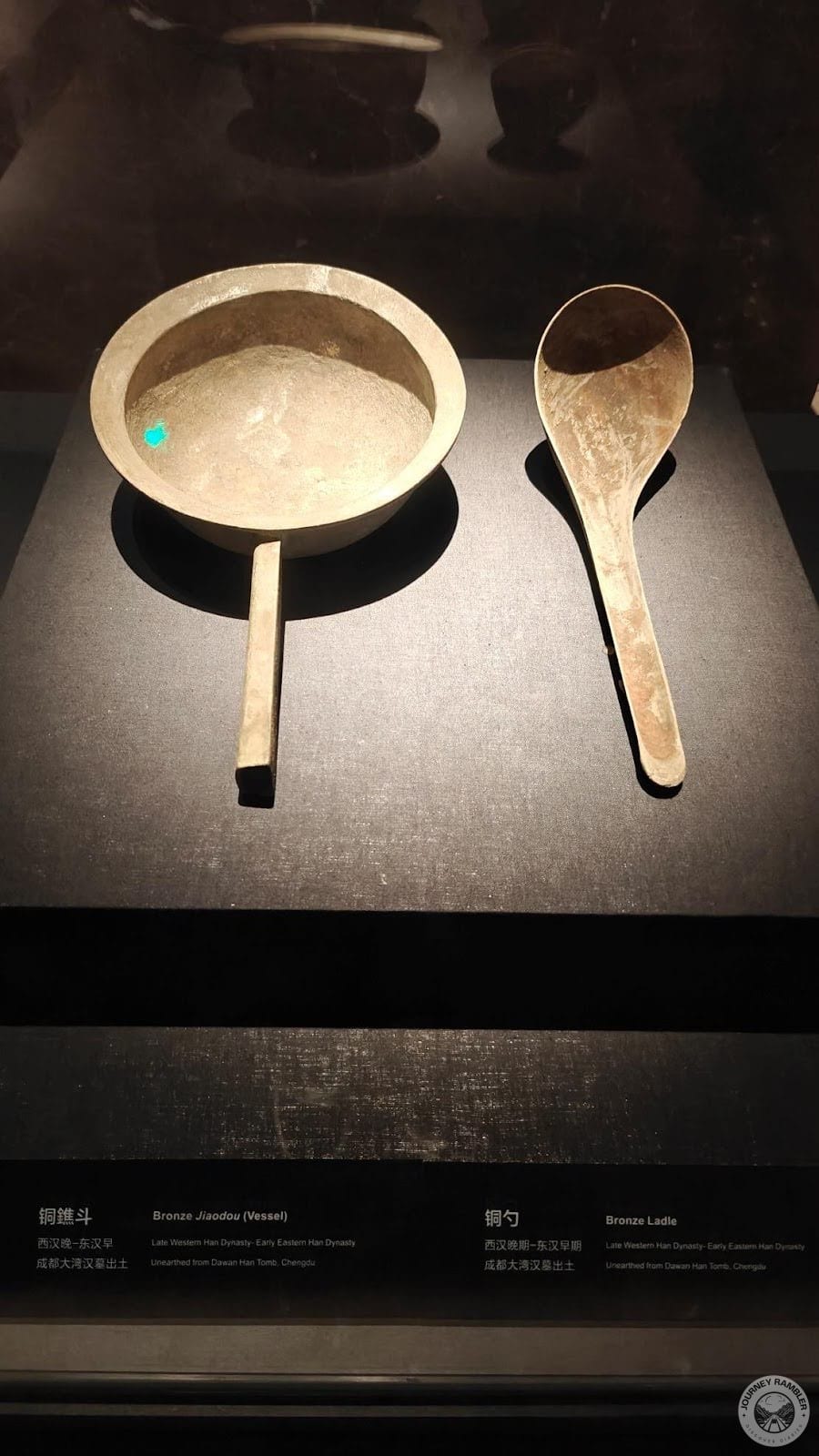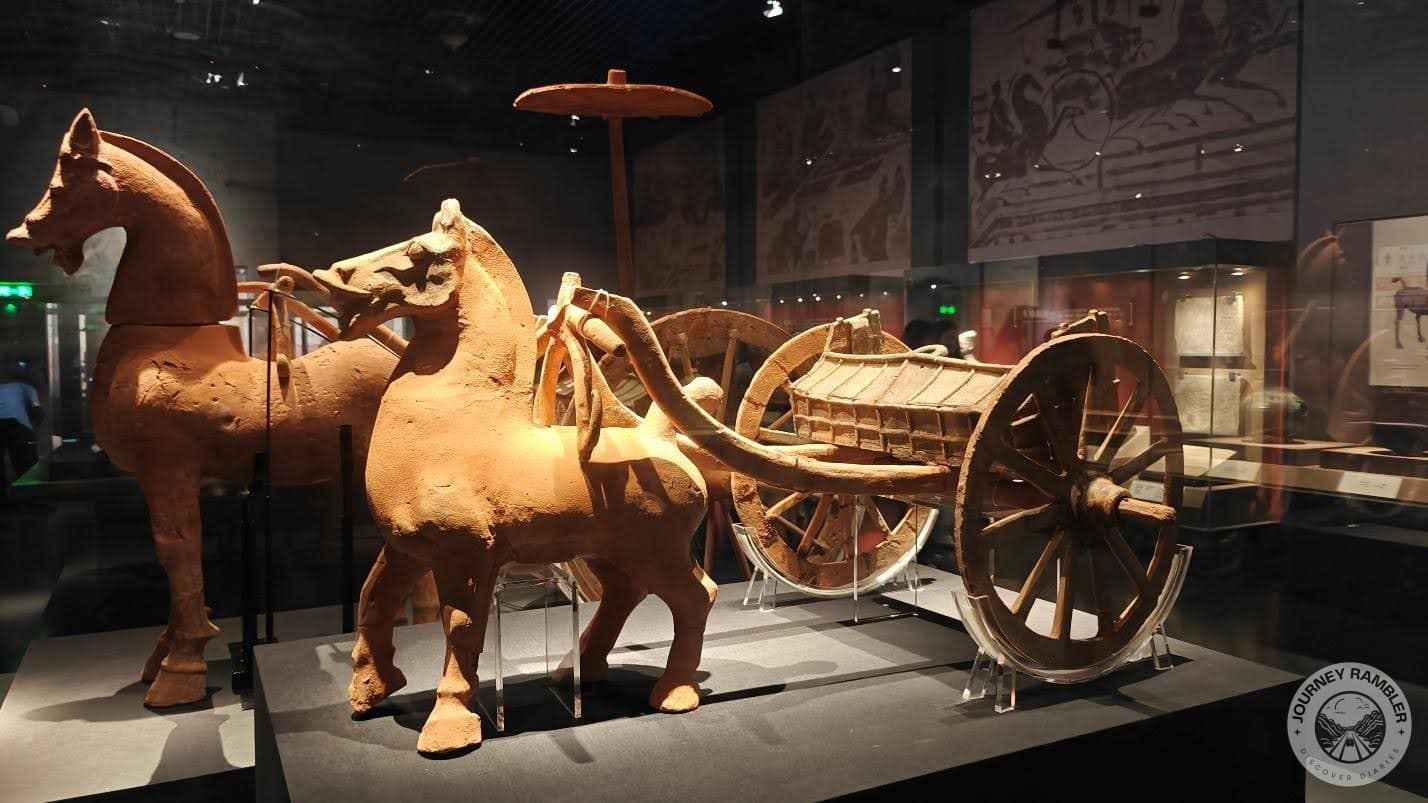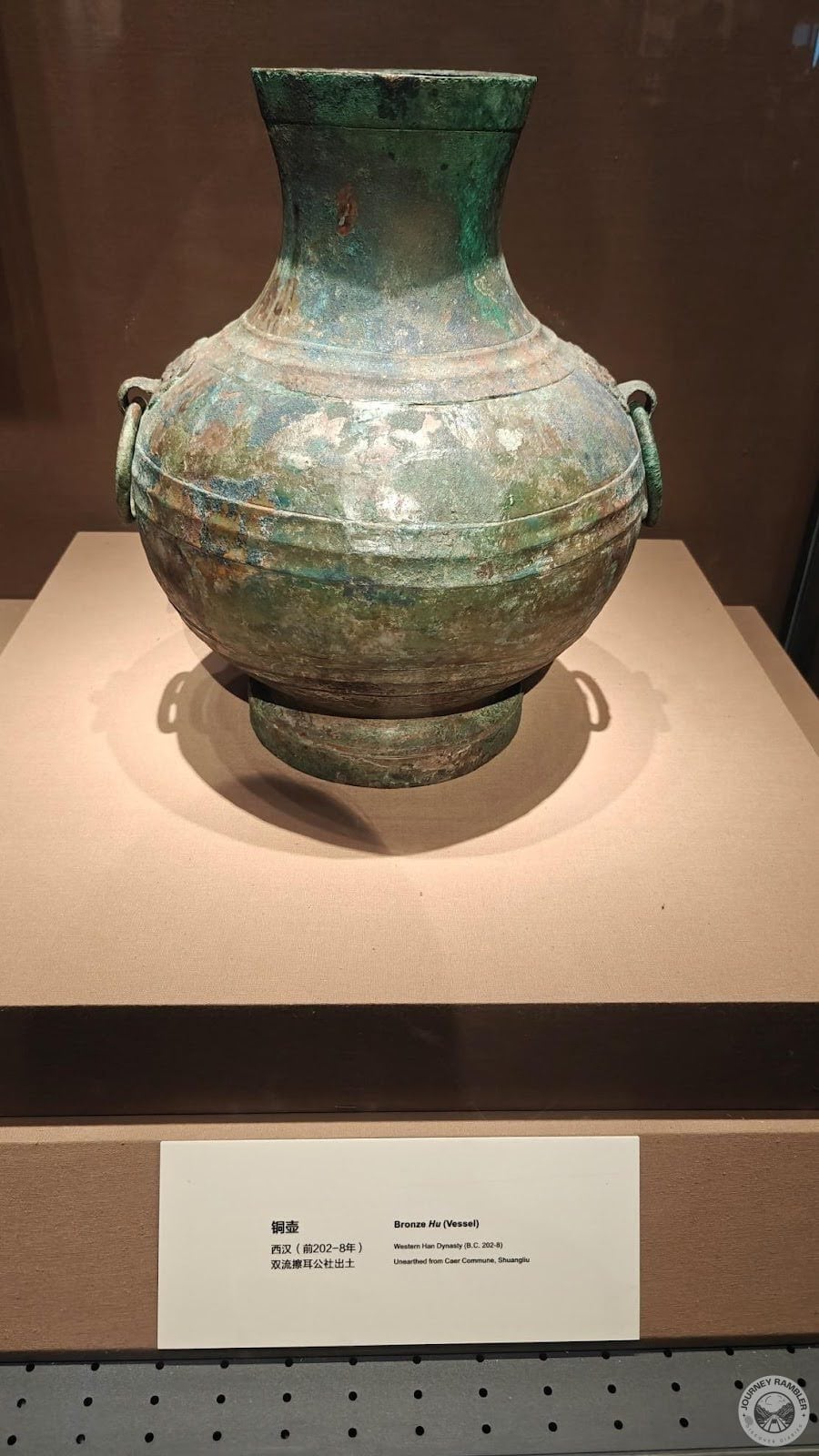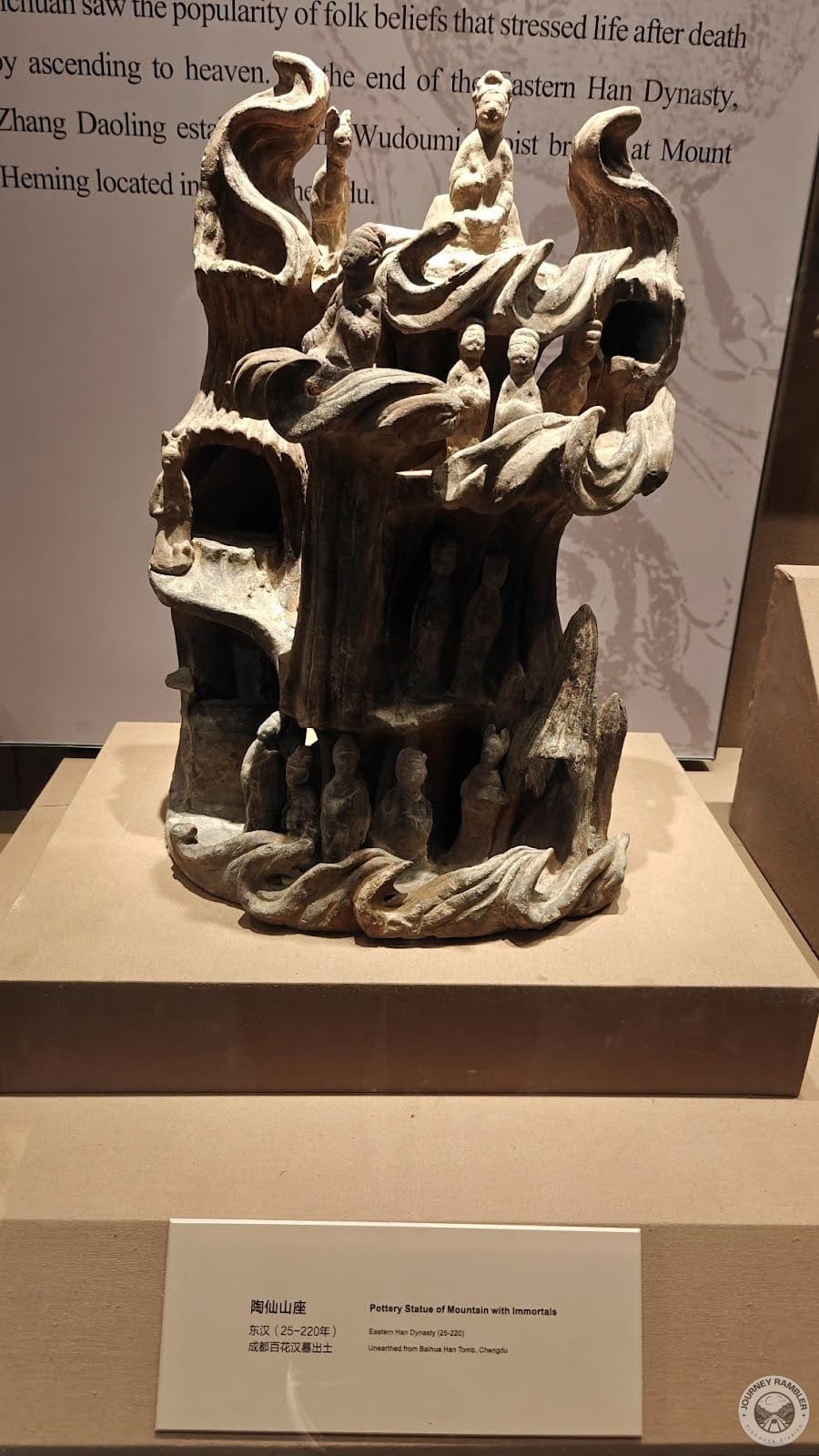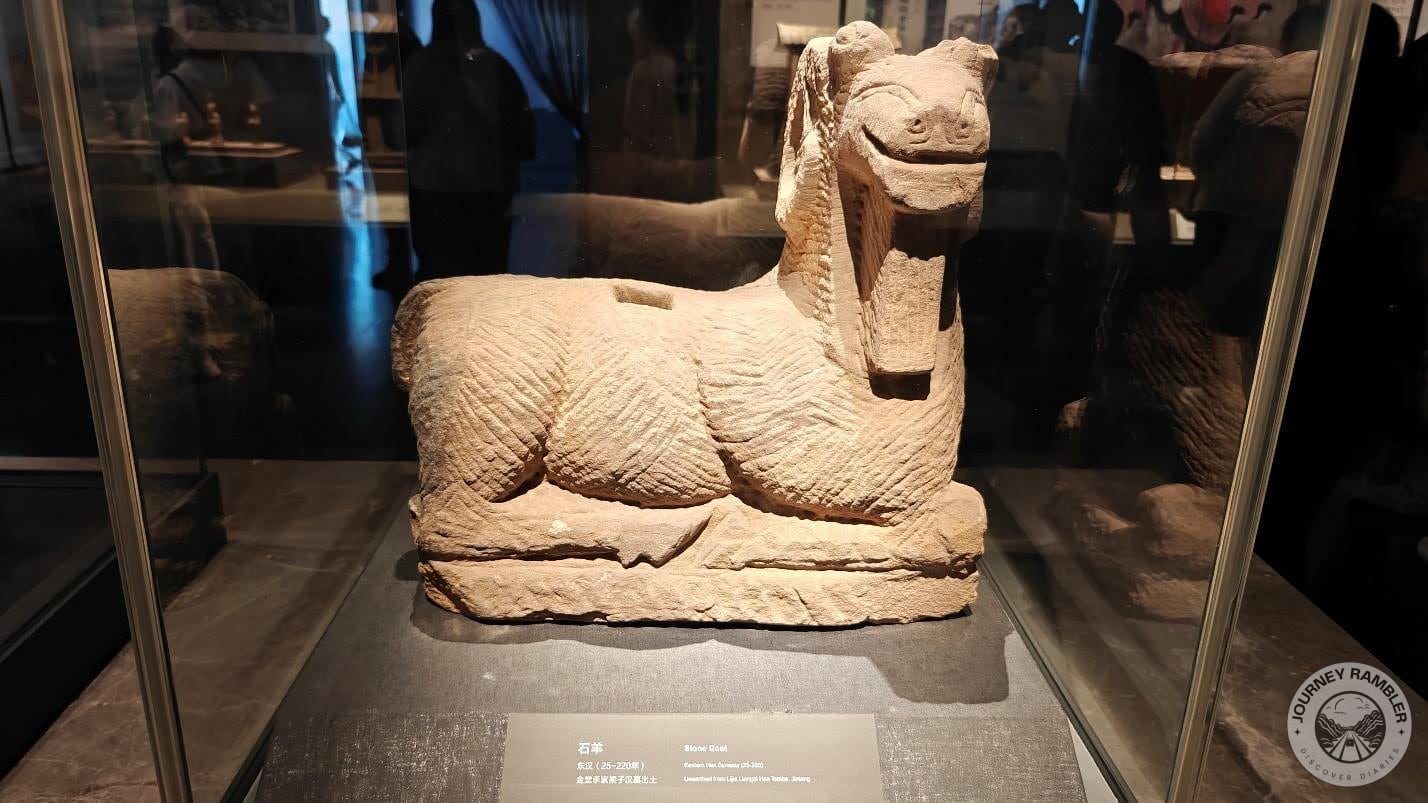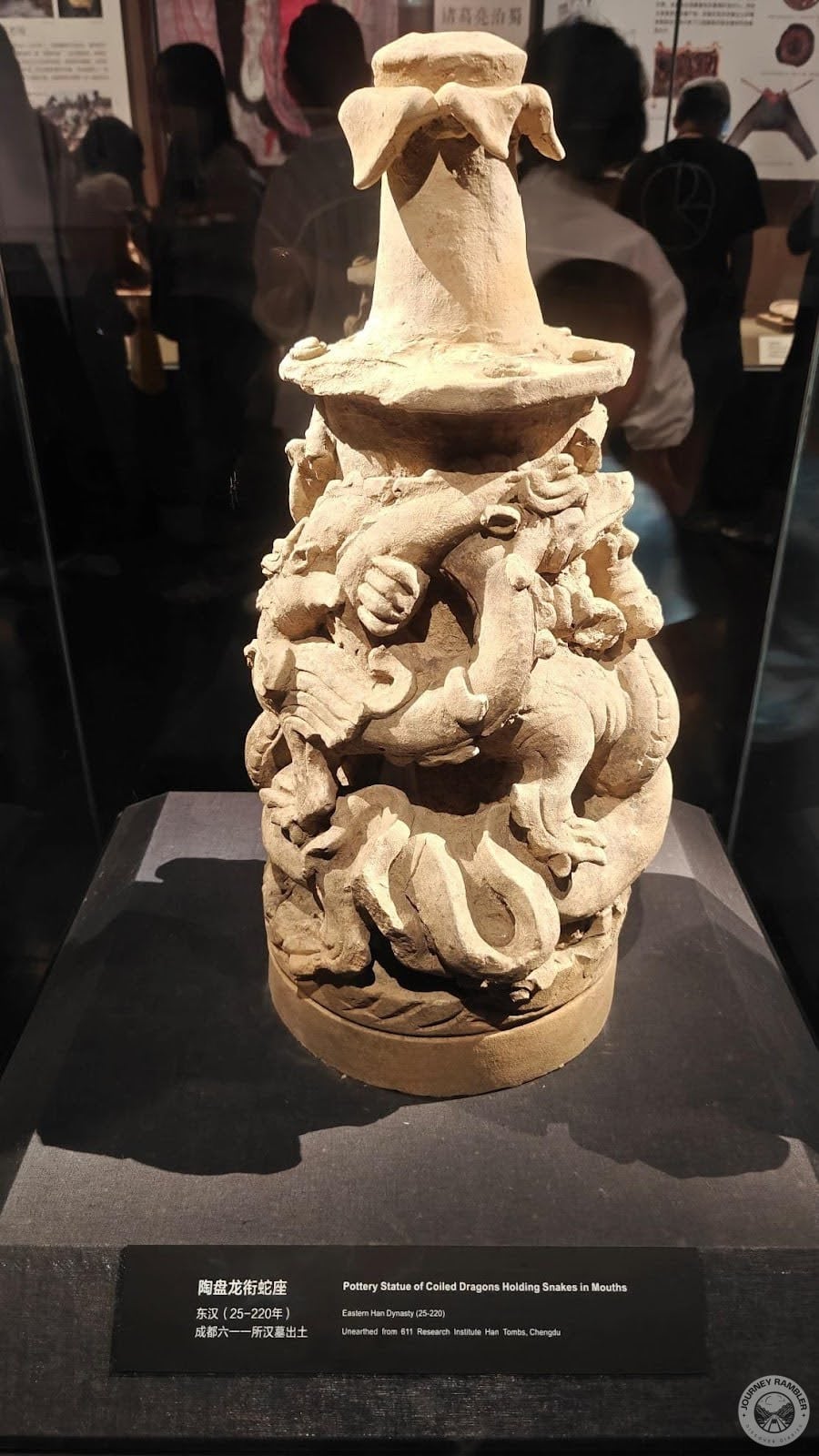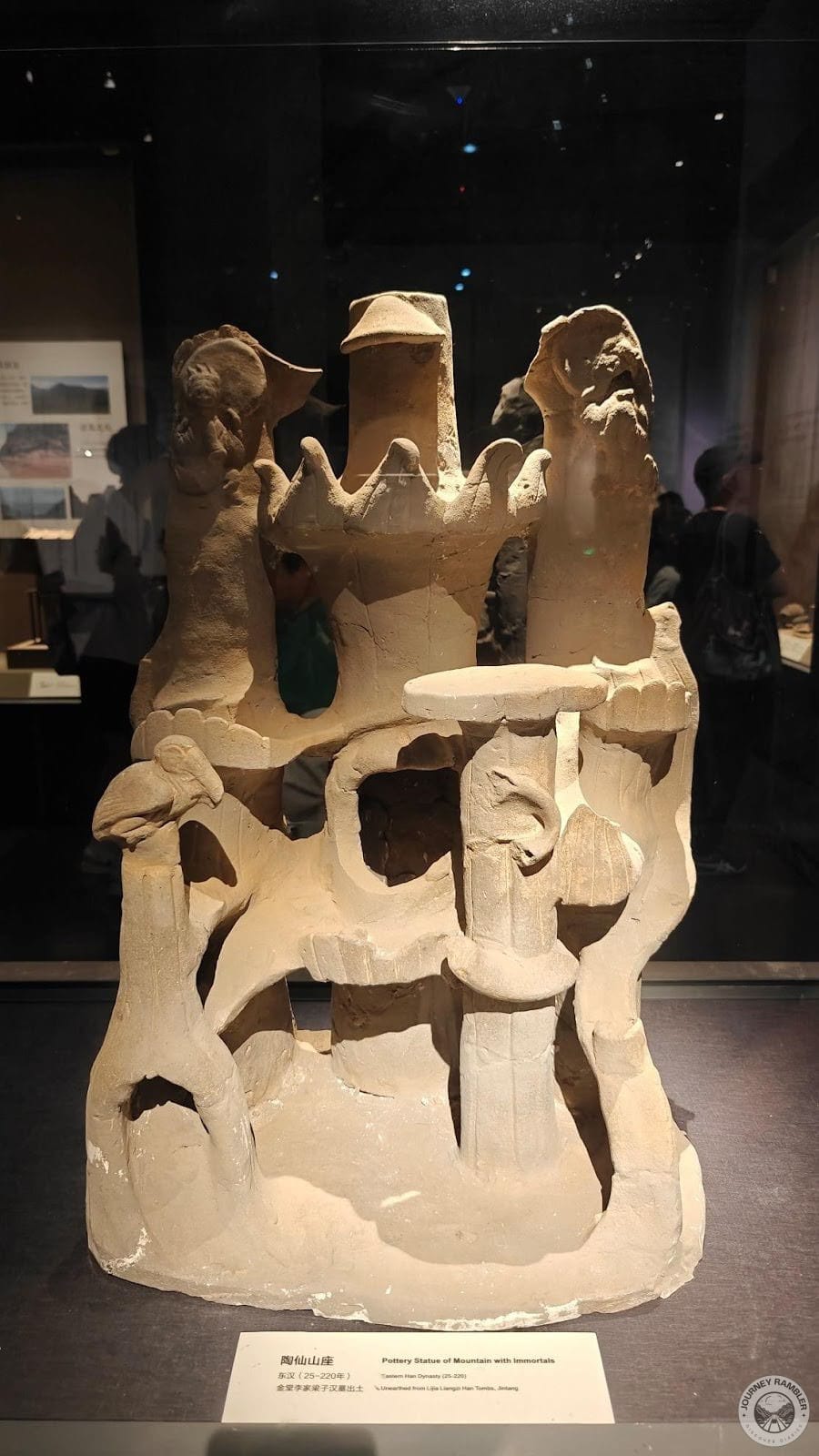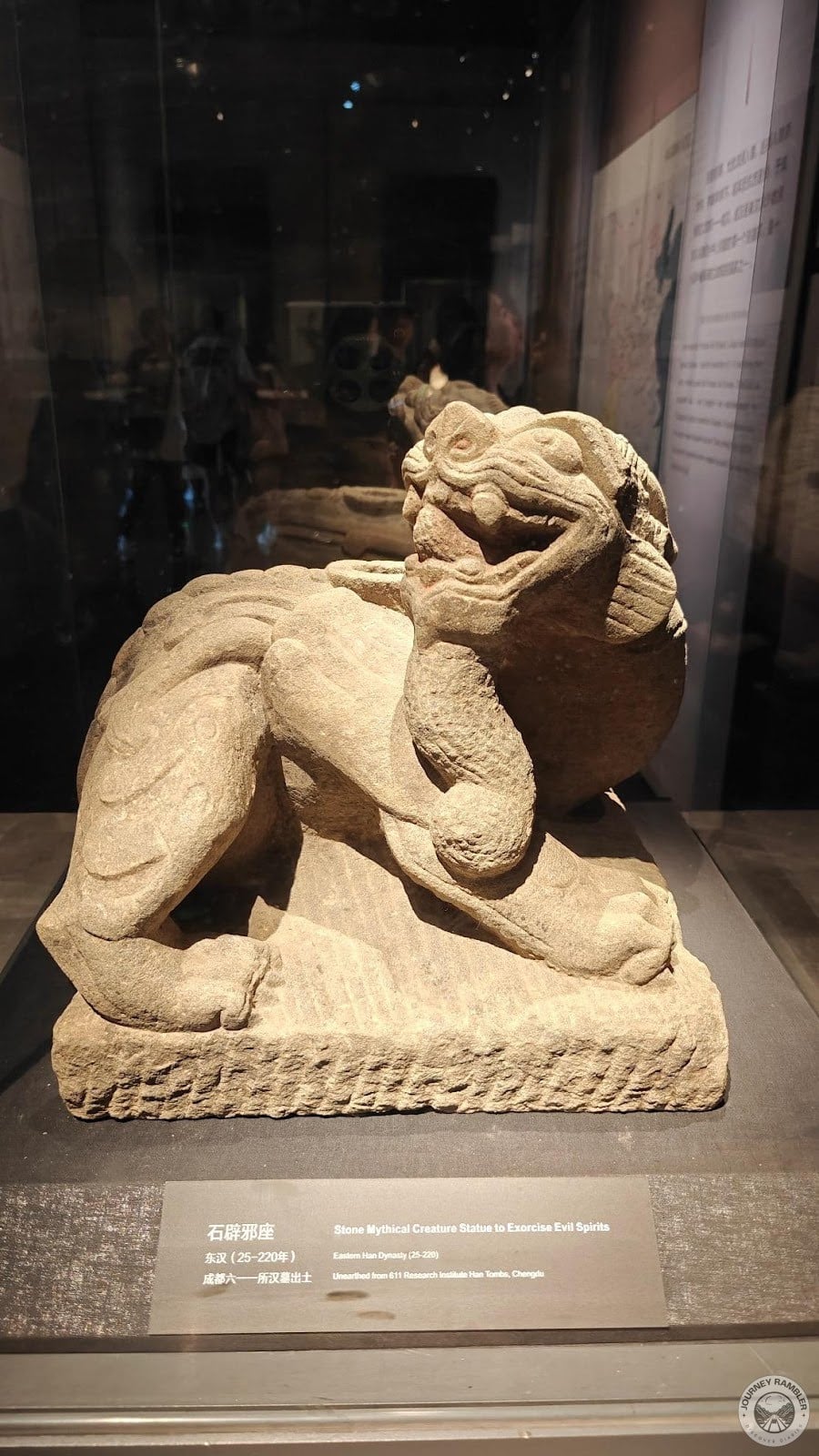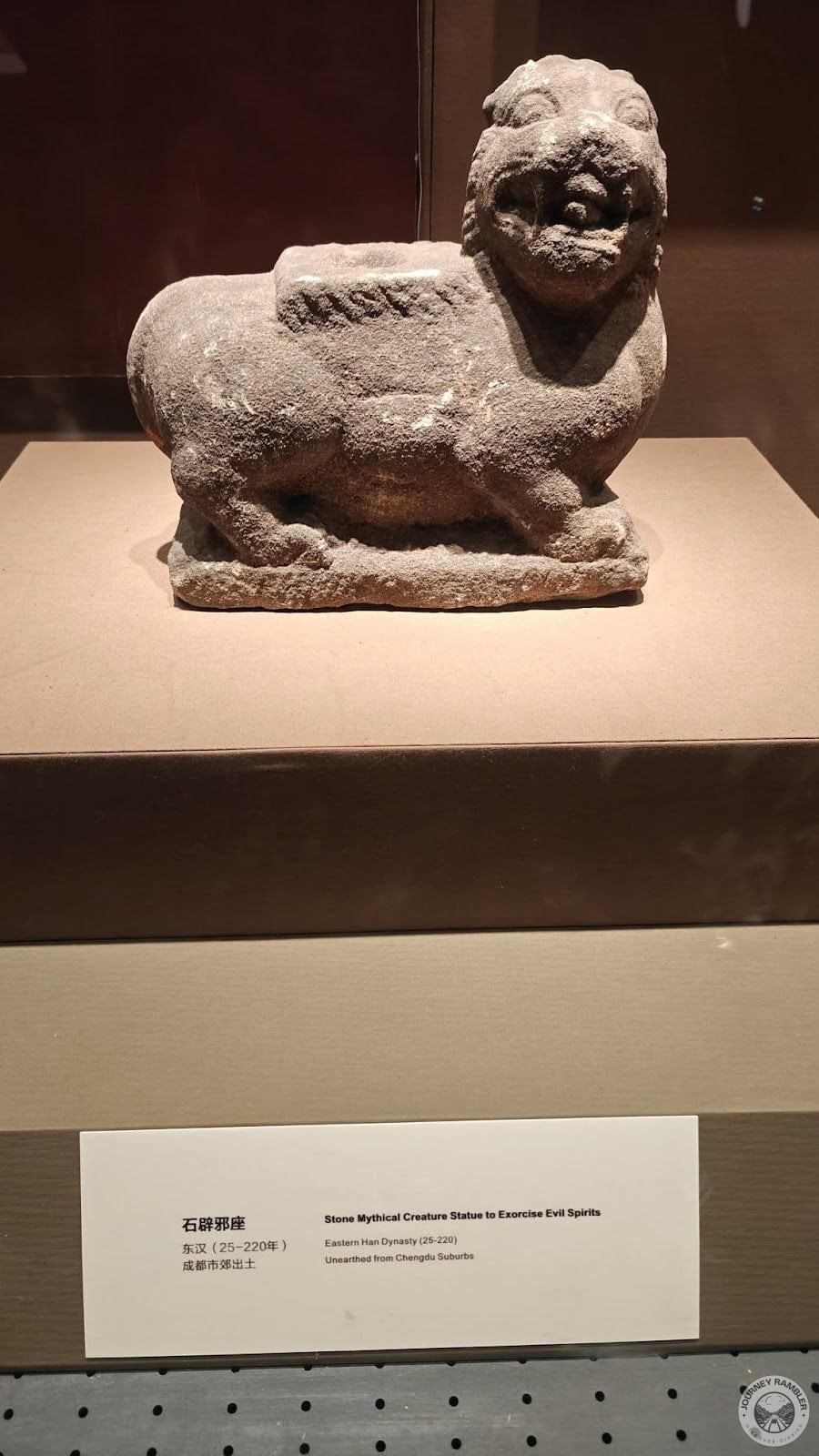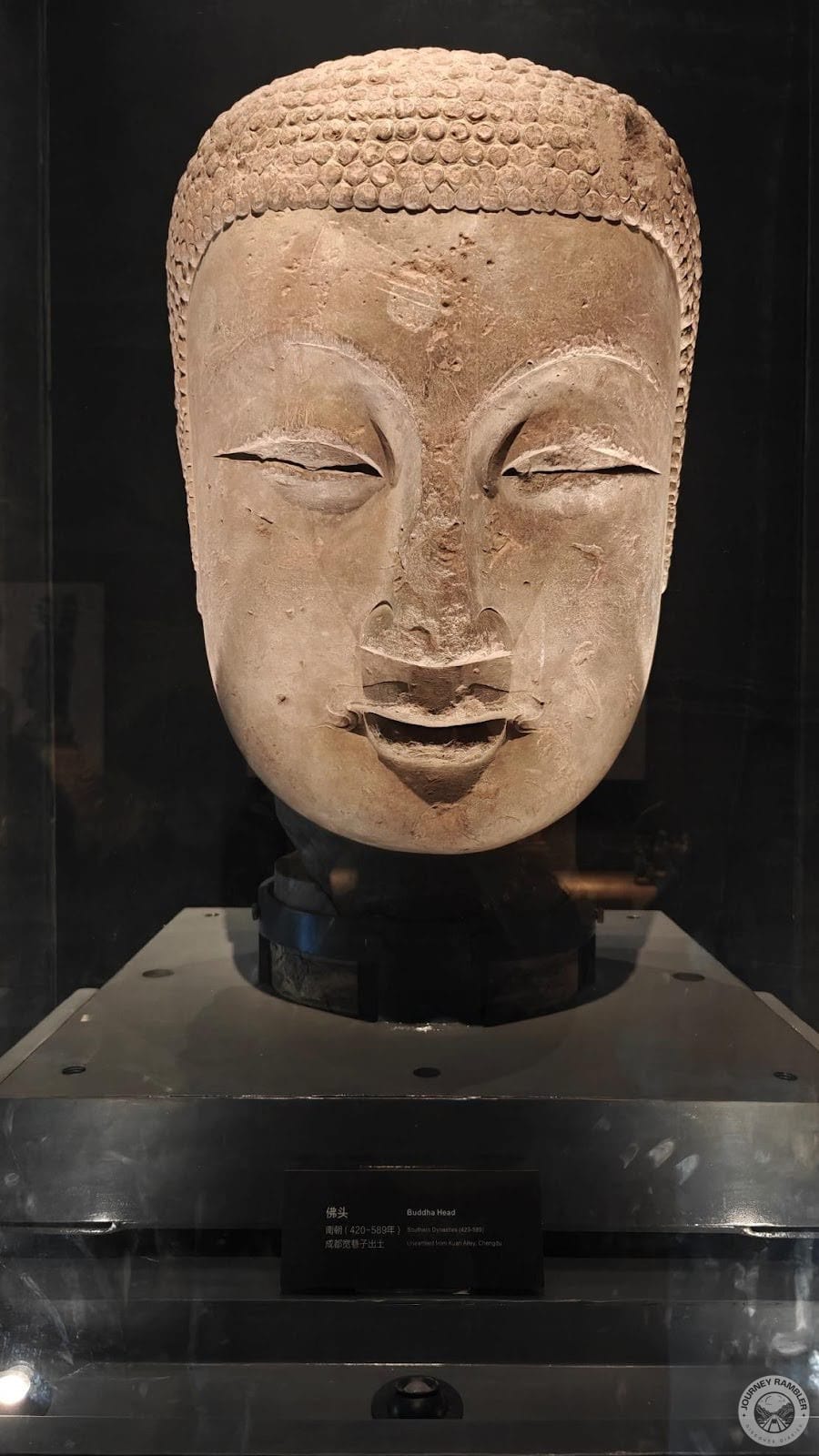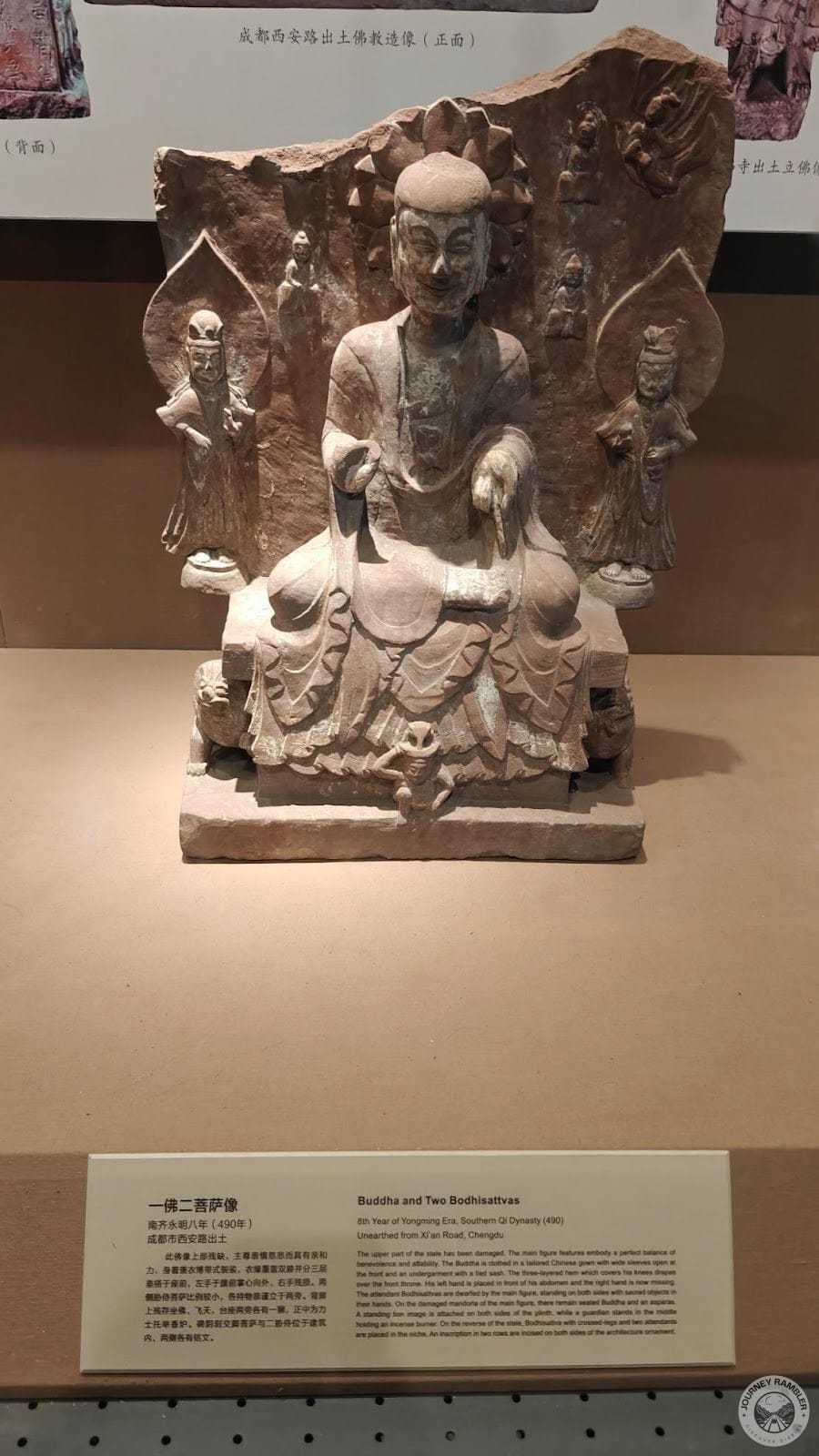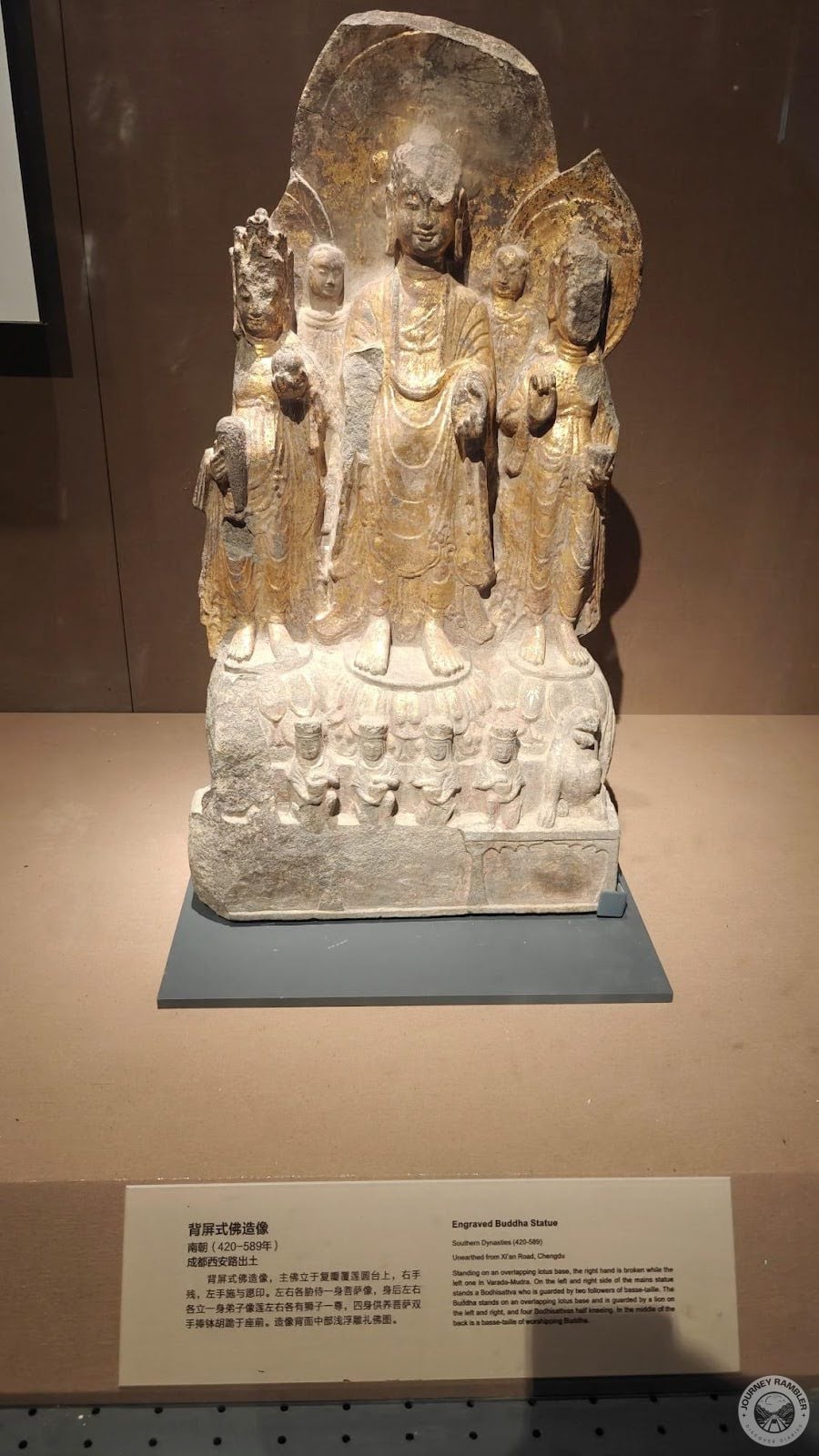Chengdu Museum: So Many Priceless Artifacts Showing China’s Very Long History
I visited the Chengdu Museum to look at their collection. There were so many artifacts and interesting things in the museum that I couldn’t even see everything! One of the first sections that I saw was the musical instruments section and a huge instrument that looked like a drum in the middle of the room.
There were also stone chimes in many sizes. Each artifact had a little caption in both English and Chinese so that visitors could know more about the items. They also had dates so that tourists could know what era they were from. After all, China and Chengdu had a very long history (You can also read my writeups about the Three Gorges Museum and Chiyou Jiuli Palace in Chongqing.).
A bronze musical instrument that almost looked like a bell caught my attention. It had carvings on the surface and little decorative spikes. The bronze had turned green with age but the designs were still visible.
I really loved the tiger shaped handle on the bronze chunyu, another musical instrument, which you can see in the image above.
Then there was a lovely pottery watchtower with so many levels! Little figures were sitting or dancing on all the levels. I read that it was from the Han dynasty and I couldn’t believe how well it had been preserved.
There were more pottery figures, of dancers and comedians. They had strange and funny shapes but their faces looked so lifelike. They were also wearing elaborate costumes and clothes.
I spent quite a long time looking at some brick relief work. There were so many interesting scenes of dancing, music, acrobatics and banquets. They were all telling stories and I tried to figure out what kind of stories they were.
The Chengdu Museum also had a pair of statues of the Buddha and Sakyamuni. They were beautifully carved. Even the backgrounds were impressive.
Of course there were scrolls, books and scripts in the museum. I saw one that had notes about some poems. It was all written in beautiful calligraphy.
Then I saw a very interesting little section where there were tiny model houses and rural scenes. It told the history of the region and how the people used to traditionally live. The houses were made of earth and had straw ceilings.
The jade disk that they had displayed looked so smooth and well-polished. I didn’t know what the disk was used for and the label didn’t tell me. But I still liked the look of it.
The big bronze jars were lovely too.
Something that really intrigued me was the boat coffins. They were made of wood and I read that they were from the warring states period. Sometimes, pottery would be buried with the dead bodies.
I saw the figure of a large animal, which could have been an elephant or a rhinoceros.
A huge pillar that was covered from top to bottom in inscriptions had been kept in the center of one room. The Chengdu Museum had provided lots of light so that the tourists could look at all the artifacts and admire the details properly. I thought the museum was very well-kept.
I read the caption and found out that the pillar was called a stele and that it was about the achievements of Pei Jun when he was alive.
The stone statues of mythical creatures that looked a little like dragons are still seen in temples all around China. The creature had an impressive mustache and whiskers and very big eyes and teeth.
They had even displayed an old loom where cloth would be woven. Threads were still attached to the loom so that guests could see how exactly the weaving would take place.
A number of stone plaques had been discovered and put together to create a scene. I stood in front of the plaques and tried to figure out what the scene was showing. It could have been a village scene or some festivities or even a battle scene. There were tiny figures of humans and animals.
The pottery dog was one of the cutest things I had ever seen. It actually looked so much like a dog.
Then I saw some bronze vessels and ladles that had been used for cooking in the old days.
A pottery replica of a horse drawn carriage showed visitors how people would travel in those days.
Some of the pottery figures and artifacts were from old Chinese stories and tales, like the statue of a mountain with immortals shown in the image above.
The stone bear was a strange mix of frightening and cute! I really liked this statue.
Finally, there were quite a few stone statues of the Buddha. Some of them showed him alone or showed just his head and some of them showed him with his followers. It had been an interesting visit to the Chengdu Museum and I was glad that I had come.

